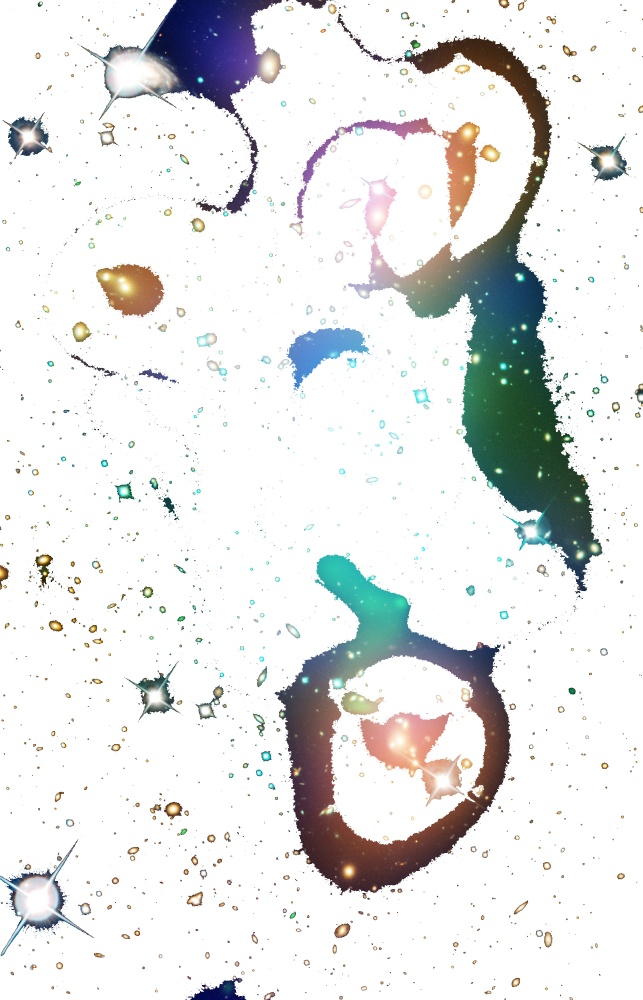OSMOSCOSMOS
ESSAYS
23.8.2019
JOERG BADER
LECTURES
INTERVIEWS
ESSAYS
OSMOSCOSMOS
/50posts is the platform for critics and the general public of the 2019 50JPG Triennial. It is just like the first blog launched in 2016 as part of the fifth 50JPG Triennial, in other words a kind of dynamic catalogue with a major advantage over the printed catalogue, that is, it can host commentary on the show while serving as an extension of it. Throughout the show, which runs from 19 June to 25 August at CPG, /50posts will feature interviews with the participating artists. Writers, artists, philosophers, and scientists will be invited to publish essays dealing with the theme behind OSMOSCOSMOS. /50posts also offers you the possibility of consulting online recordings of the talks that are scheduled in conjunction with the show.
OSMOSCOSMOS
ESSAYS
23.8.2019
JOERG BADER
In the course of the research I carried out for caméra(auto)contrôle, the central exhibition of the last edition of 50JPG (2016), I became increasingly distressed as I discovered our huge ignorance as regards the data collection industries and their links with government administrative bodies. The potential for controlling citizens, and their opinions, have constantly increased in the meantime and states are putting ever more legislation in place allowing future authoritarian regimes to control us well beyond what George Orwell might have imagined with his dystopia, 1984.
Three months before the official opening, three friends spoke to me separately about astrophysics, to me as someone who has never understood anything about mathematics, physics, or indeed astrophysics. One of them is a theorist, Jordi Vidal, another a musician, Vincent Haeni, while the third, Charles Ganz, is involved in architectural marketing. Being totally ignorant of these worlds, I was fascinated by the fictional aspect of the various current theories, whether it be the string theory, for example, or theories involving parallel universes. These scientific fictions, based on rationality—the same rationality that led us out of superstition, or indeed away from mainly monotheistic religions—put me in a good frame of mind that carried me along to the official opening. Moreover I again encountered that overflowing enthusiasm with Andrew Strominger who commented in his lecture relating to the still mysterious interface between gravitation and quantum mechanics that we were living through an extraordinary moment in the field of physics, infecting his public with his enthusiasm. It was on the occasion of the Gravity – Universal attraction Wright colloquium at the University of Geneva which attracted a full house every evening in the second week of November 2018.
It is a pleasure to share with so many earth-dwellers a gaze directed towards the skies, not in order to see God, but perhaps to discover the scientific explanation of the origins of our cosmos, the explanation of where we come from. (And its implicit corollary: the question of where we are going). When I wonder about what each of us, our gaze turned towards the stars, hopes for from his or her observation, I suppose that the answers must be equal in number to the stars in the Milky Way. But one thing is obvious, and not everyone is willing to admit it, particularly those who expect to leave this earth within 20 years: we have only one earth and it is going to be necessary to make do with it.
Jordi Vidal drew my attention to a book that came out in 2014 in the “encre marine” collection, a book by Alexei Grinbaum, Mécanique des étreintes. A philosopher and quantum physics theorist, he follows a thread leading from Greek philosophy to Christian theology and on to quantum mechanics, questioning how it is possible for us to take two entities for a single one. He constantly uses words that are found as much in the erotic field as in cosmology. There are many examples: the force of attraction of bodies, noces quantiques [quantum weddings], the fusion of two entities. Alexei Grinbaum also relates that “on leaving Eden Adam and Eve wished to agree about the answers to be given when they were questioned in the future. The agreement they signed up to is nothing other, metaphorically, than a ‘hidden’ act of coordination such as is described by Einstein’s heretical theory of ‘local hidden variables’." [1]
In his book Love and Math, the mathematician Edward Frenkel describes the film Rite of Love and Death, directed and acted by the writer Yukio Mishima based on one of his short stories: “A mathematician creates a formula of love, […] but then discovers the flip side of the formula: it can be used for evil as well as good. He realizes he has to hide the formula to protect it from falling into the wrong hands. And he decides to tattoo it on the body of the woman he loves.”[2]
If Cupid and Eros are now being related to mathematics and quantum physics, Eros has already had a relationship with Cosmos since the time of the Greeks. Jean-Pierre Vernant in The Universe, the Gods, and Mortals describes the birth of the Cosmos in these terms:
“At the very beginning, what existed first was the Void; the Greeks say Chaos. … It is an emptiness, a dark emptiness where nothing is visible. … Then Earth appears. The Greeks call it Gaia. Earth rises up in the very heart of the Void.”
“After Chaos and Earth third in the sequence comes what the Greeks called Eros, and later called ‘Old Love’ (pictures show him with white hair): This is primordial love. … This original Eros is not the one that will appear later on, with the occurrence of men and women...”
“Earth first gives birth to a very important figure, Uranus, ... the same dimension as she. He lies sprawled on her who brought him into being. (He) … covers Earth totally. From the moment that Gaia–the powerful divinity, Mother Earth–produces Uranus, her exact correspondent, her duplicate, her symmetrical double, we are in the presence of a pair of opposites: a male and a female. Uranus is the Male Sky just as Gaia is the Female Earth.”
“The primordial Uranus has no activity other than sex. Covering Gaia ceaselessly, as much as he can–that is his sole idea, and all he does. So poor Earth is constantly pregnant with a whole stream of children–who cannot get out of her belly, who stay stuck right where Uranus begat them. Since Sky never pulls apart from Earth, there is no space between them to let their offspring–the Titans–emerge into the light and lead an autonomous existence…” and “…Uranus maintains a continual night by lying on Gaia. Then Earth lets loose her resentment. … She calls on … the Titans in particular saying: ‘You must rise against your father’. … Earth … inside herself shapes … a steely instrument–a sickle… She puts the sickle handle into young Cronus’s fist. … Just as Uranus empties his seed on Gaia, Cronus captures his father’s sexual parts in his left hand, grips them firmly, and wielding the sickle with his right hand, he slices them off. … From this organ, severed and flung behind him, drops of blood fall to the ground, but the organ itself flies still farther off and into the briny deep. At the instant he is castrated, Uranus utters a howl of pain and pulls away from Gaia. He then goes to settle at the summit of the world, no longer to leave it again. … By castrating Uranus, … Cronus achieves a fundamental stage in the birth of the cosmos: He separates the earth from the sky. … But then Uranus withdraws; the Titans can emerge from the maternal belly and in their turn create progeny. The way is then opened to a sequence of generations.”[3]
Uranus’s sexual organ, cast into the sea by Cronus, “floats, and the foamy sperm mingles with the foam of the sea. From that foamy combination around the organ which moves at the whim of the waves a superb creature is formed: Aphrodite, the goddess born of the sea and the foamy sperm. … In the wake of Aphrodite, moving forward after her, Eros and Himeros, desire and tenderness. This Eros is not the primordial Eros, but an Eros who demands that there should henceforth be masculine and feminine. It will sometimes be said that he is Aphrodite’s son. This Eros has therefore changed his purpose. He no longer has [the same] role as at the very beginning of the cosmos ... His role now is to unite two very individualised beings, of a different sex, in an erotic game that presupposes a love strategy with all that involves of seduction, harmony, jealousy. … Eros … is agreement and unity between two elements as dissimilar as feminine and masculine can be.”[4]
In Greek mythology Eros plays an eminently important role at the time of the constitution of the cosmos. Eros is also described by Jean-Pierre Vernant as the force that is always moving, a bit like the cosmos which is constantly expanding. While Eros in his initial phase has the reputation of being a matchmaker, for example egging Uranus on to mate with Gaia, the exhibition OSMOSCOSMOS is attempting through photographic and videographic images to bring Eros and Cosmos together, or to put it in more modest terms to bring together images dealing with eroticism and ones referring to the cosmos, and vice versa.
The only image in the exhibition that is not photographic or videographic is an abstraction: Cosmic Fuck by Lee Lozano. This graphic work, constructed by the artist from the symbol of the infinite, contains within itself what the exhibition cannot convey visually: that moment of extreme exaltation in erotic union, between two beings, at the climax of ultimate arousal, that moment of shared pleasure which for a short moment of eternity makes us feel we are only one, in osmosis with one another, merging with the cosmos.
Through their descriptive power photographs and videos retain an allusive nature, compared with the precision of Lee Lozano’s drawing which offers a representation of erotic osmosis. Isn’t it allusion among other things that distinguishes the erotic from the pornographic, the latter being duty bound to let everything be seen? The erotic imagination has been enriched by a large number of new erotic and sexual fantasies since the 1970s. Those are the years when I was reaching maturity, sexually and intellectually. For very wide strata of society in the western world the struggle for sexual self-determination was played out in those years and it certainly constitutes a marker of the last century. In this sense the OSMOSCOSMOS exhibition is an attempt to follow the lines of the years from the “Summer of love” in 1967 up to the present day, and celebrate sexual desire outside all ideologies of suffering and guilt, of the type the monotheistic religions violently impose, just like the reaction to their oppression, not always more liberating, such as the Marquis de Sade and his advocates.
What was being played out then in contemporary art and in society, a possible overturning of patriarchy, started with the struggle for civil rights, for equality between women and men, between women and women, between men and men, and for respect for children. For OSMOSCOSMOS, the artists of those years form the starting point for a great diversity in representing Eros, also including criticism of the practices involving misogynistic representations that came into being at the same period, such as publishing businesses enjoying worldwide success such as Playboy or Lui[5]; many artists unmask the apparent nature of genders, and throw overboard the coded roles of “masculine/feminine”[6].
Eroticism did not become a 20th-century –ism as Duchamp had wished, but it continues to feed the output of art in the 21st century. Of course the issues are no longer defined by the question of showing or not showing. There was nothing more subversive in the art of the 50s and 60s than exhibitions of pornographic photographs (from Lebel to Richter and Warhol by way of almost all the interesting artists of those years). The only thing is that pornography has become the most lucrative business on the Internet (a radiographic performance in the exhibition will deal with that form of eroticism). When I was recently invited to a school of photography as part of a mock jury, I noted how the students presented their works as a collective to highlight their parallel worlds and above all the attention they gave to working together. A small group had chosen the word “Obscene”. None of the objects and images presented in a miniature format had anything obscene about them, far from it, other perhaps than something allusively erotic. Convinced I was in the presence of a misunderstanding, I steered the discussion towards the pornographic, and it turned out that these young women and men, around 25 years old, had grown up with pornography on the internet and wanted to have absolutely nothing more to do with it.
In the constant transgression of moral codes during the last century, there was perhaps a moment when transgression imploded. As the writer Alain Robbe-Grillet says, “pornography is other people’s eroticism”. 1989 was the year when the 200th anniversary of the French Revolution was celebrated, and it also provided the context for the exhibition Magiciens de la Terre. That year Ilona Anna Staller, a member of parliament for the first Italian green party, then for the Radical Party, turned up on the ultimate scene, that of penetration. Those photographs of La Ciccolina with the post-Pop artist Jeff Koons showing everything belong to the series Made in Heaven (another attempt to marry eros and cosmos!). They caused a scandal at the Venice Biennale. The question of whether “to show or not to show” seems to arouse no interest today. The contemporary question is much more about “how to show”. How can images different from those marked by the codes of representation of patriarchy and colonialism be produced?
A very major part of the exhibition can be seen as following the paths embarked on by the artists of the 1970s/80s. Thanks to #metoo among other things, the questions of the emancipation of men and women from their positions as dominant/dominated fortunately nurture many of today’s debates. Among other things OSMOSCOSMOS sets out to be the echo of this awakening of feminism and the questions relating to gender. But all these thematic aspects are only tiny fragments of a whole that is hard to grasp. The two themes, eros and cosmos, are already almost inexhaustible. The construction of the exhibition has not followed lists of artists or thematic pointers. It is much more the outcome of a mental and physical wander during the last three years, with images gleaned in the way in which Mona gleans them in the film Sans toit ni loi. It is a juxtaposition of parallel worlds, not necessarily intended to be found under the same roof, under the same law.
Great changes have also taken place in astrophotography, but changes of a different nature, mainly thanks to computer-aided photography. If the next to latest outstanding moment in our extra-terrestrial relations was the landing of a Chinese probe on the “Dark Side of the Moon”, the latest was the first photographic proof of a black hole, though it is not yet photography in the sense of the recording of a photon. It is no longer light rays, but sound waves coming from a distance of 53 million light years that have been recorded, then interpreted by Katie Boumann. She was the one who had developed the algorithm at the MIT which made it possible to coordinate all the data gathered by eight radio-telescopes across the world to produce the image we saw recently, that of the first black hole at the heart of the M87 galaxy.
While OSMOSCOSMOS does not attempt to follow in the footsteps of the Surrealists’ Eros exhibition[7], neither does it seek common ground with the avant-gardes of the 1920s, for example with the book Painting, Photography and Film in which László Moholy-Nagy juxtaposes abstract photograms and X-rays or astronomical photographs.
OSMOSCOSMOS does not make use of scientific photography. Most of the images with references to the cosmos are the artefacts of photographers and artists. The images are derived from their imagination and not from a cosmonaut’s Hasselblad. Just one projection, with magazine and newspaper headlines, will sum up the conquest of space close to the earth, and an amateur astrologer woman photographer from Buenos Aires as well as two Genevan amateur astro-photographers will present part of what they have garnered, thanks to the major changes in the taking of shots, digital images and their computer enhancement, including a galaxy that was discovered by one of them. Two established artists are showing scientific photographs they have acquired at certain scientific institutions. The fascination of the avant-gardes of the 1920s with looking at the very near and the very far perhaps finds its equivalent today in the initiatives of a geostrategic nature, such as those displayed by Trevor Paglen, especially in the course of his lectures. His way of reading our firmament in the era of drones and satellites is a salutary position, with its offensive aspect at a moment of history, already described, when the control industry is immensely powerful, accelerated among other things by the injection of billions of dollars following the Twin Towers attacks in New York, which justified the Patriot Act. We know what followed.
The exhibition design is the work of Alexandra Schüssler, the co-curator of OSMOSCOSMOS. The rooms are plunged into semi-darkness, illuminated only by the fixed and moving images and the lighting in the showcases where printed photographs are exhibited, whether they be fine-art prints, books or press photographs. This strategy of mounting in showcases or on the walls with projection recognizes the debt it owes to Aby Warburg. The historian of art and civilisations, side-lined during the 20th century and so prized in the 21st, showed his exhibition Collection of images on the history of astrology and astronomy at the Hamburg planetarium at the water tower in a Hamburg city park in 1930, before being transformed into a planetarium. As he had worked a lot with copies, “the experience of authenticity” was replaced in his case by an “experience of meaning”. In that sense OSMOSCOSMOS, like all the CPG’s exhibitions, is relying on the “experience of meaning”. It is an atlas to the most subjective constellations, inviting viewers to construct their own cosmos. It is said that Aby Warburgs astrological library is the largest in the world. Unfortunately we have not been able to pursue his interest in either non-European cosmologies or astrology. Not because we did not wish to, quite the opposite, but quite simply for lack of space, resources and time.
We are very grateful to the artists for agreeing to go along with us and alter the nature of their photographs, whether in a material way or in format. It is thanks to their participation in the exhibition project that OSMOSCOSMOS can offer constellations of images that make up a very subjective cosmos, or even an atlas. On the other hand, some selections of images could not be followed through because of the refusal by some artists to accept the conditions of the proposed arrangement.
Distances of all kinds remain a determining factor in a world that claims to be globalised. In this sense OSMOSCOSMOS is an opportunity to rediscover artists who have worked with the CPG in the past. They are a third of all. By this means we are also following another underground thread in the CPG’s programming, that which consists of showing the same image in different exhibitions, to suggest different possible interpretations of it.
However, despite the lack of space and other lacks, there is still room on this page to include these few lines, recollecting that other ways of life, different spiritual outlooks bringing together eros and cosmos, dwell on the planet you are standing on as you read these lines. In his book Les Bûchers de Bénarès – Cosmos, Eros et Thanatos Michel Onfray writes that “[In Indian erotic art] sex is simple, natural, in tune with the cosmos, never separated from reality, the world, life, other people, always there to remind us of the connection between the parts and the great whole.”[8] And he goes on to develop his ideas: “Now sex is not everywhere, any more than it is nowhere. It is in the world, one force among thousands of others. There is a libidinal energy just as there is a spermatic potency of flowers, a reproductive force of astral bodies, a tropism of cosmic flows, a magnetism of animal vigour, all of them representing variations on the immaterial, invisible unique force.”[9]
Joerg Bader
Curator and director of the Centre de la photographie Genève
[1] Alexei Grinbaum, Mécanique des étreintes, Éditions Les Belles Lettres, 2014, Paris, p. 89
[2] Edward Frenkel, Love and Math, Basic Books, 2014, New York, p. 232
[3] Jean-Pierre Vernant, L’Univers, les Dieux, les Hommes, Éditions du Seuil, Paris, 1999, pp. 15 – 22 ; English edition, The Universe, the Gods, and Mortals, tr. Linda Asher, Profile Books, London, 2002, pp. 3 – 9
[4] Jean-Pierre Vernant, L’Univers, les Dieux, les Hommes, Éditions du Seuil, Paris, 1999 p. 25 – 26 ; English edition, The Universe, the Gods, and Mortals, tr. Linda Asher, Profile Books, London, 2002, pp. 10 – 13
[5] See the journal absolu, pub. by the singer Claude François who sometimes got involved in work as an “erotic” photographer
[6] This is also the title of an exhibition, one of the first to establish a kindred-spirit relationship between mainly Surrealist modern art, and contemporary art with its emphasis on eros. Féminin/Masculin, shown at the Centre Georges Pompidou in Paris in 1996, was organized by Marie-Laure Bernadac and Bernard Marcadé.
[7] The exhibition inteRnatiOnale du Surréalisme was held at the Galerie Cordier, organized by André Breton and with contributions by Marcel Duchamp in the exhibition and the catalogue, Paris, 1959-1960
[8] Michel Onfray, Les Bûchers de Bénarès – Cosmos, Eros et Thanatos, Éditions Galilée, Paris 2008, p. 66
[9] Idem, p. 71/72
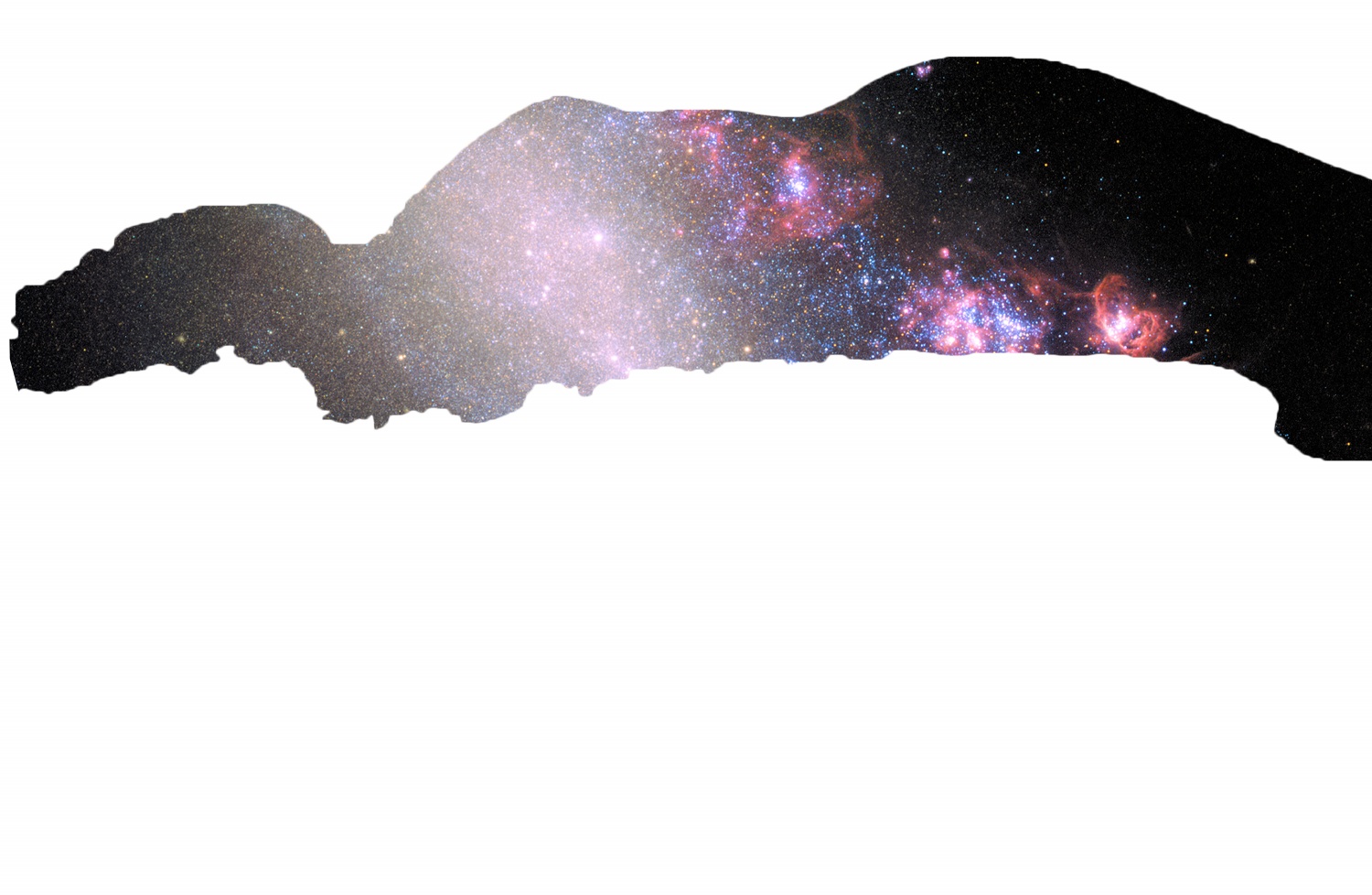
BARBARA WOLFF / NASA
KNIT YOUR OWN STUFF
OSMOSCOSMOS
21.8.2019
ALEXANDRA SCHÜSSLER, CO-CURATOR
I was reading Mauriac the other day: the Mémoires intérieurs, written at the very end of his life. It’s the time when the final pellets of vanity accumulate into a cyst, when the self starts up its last pathetic murmur of ‘Remember me, remember me…’; it’s the time when the autobiographies get written, the last boasts are made, and the memories which no-one else’s brain still holds are written down with a false idea of value.
But that’s just what Mauriac declines to do. He writes his ‘Mémoires’, but they aren’t his memoires. We are spared the counting-games and spelling-bees of childhood, the servant-girl in the humid attic, the canny uncle with metal teeth and a headful of stories – or whatever. Instead, Mauriac tells us about the books he’d read, the painters he’s liked, the plays he’s seen. He finds himself by looking in the works by others. He defines his own faith by a passionate anger against Gide the Luciferian. Reading his ‘mémoires’ is like meeting a man on a train who says, ‘Don’t look at me, that’s misleading. If you want to know what I’m like, wait until we’re in a tunnel, and then study my reflection in the window.’ You wait, and look, and catch a face against a shifting background of sooty walls, cables and sudden brickwork. The transparent shape flickers and jumps, always a few feet away. You become accustomed to its existence, you move with its movements; and though you know its presence is conditional, you feel it to be permanent. Then there is a wail from ahead, a roar and a burst of light; the face is gone for ever.
(in: Julian Barnes: Flaubert’s Parrot, London: Picador (1984) 1995: 95-96.)
“Knit your Own Stuff”, is an advice Julian Barnes gives to writers. But I am not a writer. Instead of composing my own text I fall back on a passage I have read. If you want to know what I have to say, study the reflection of my thoughts in another man’s text – and above all in the exhibition display of OSMOSCOSMOS. Move with its movements and feel its permanency and ultimate disappearance.
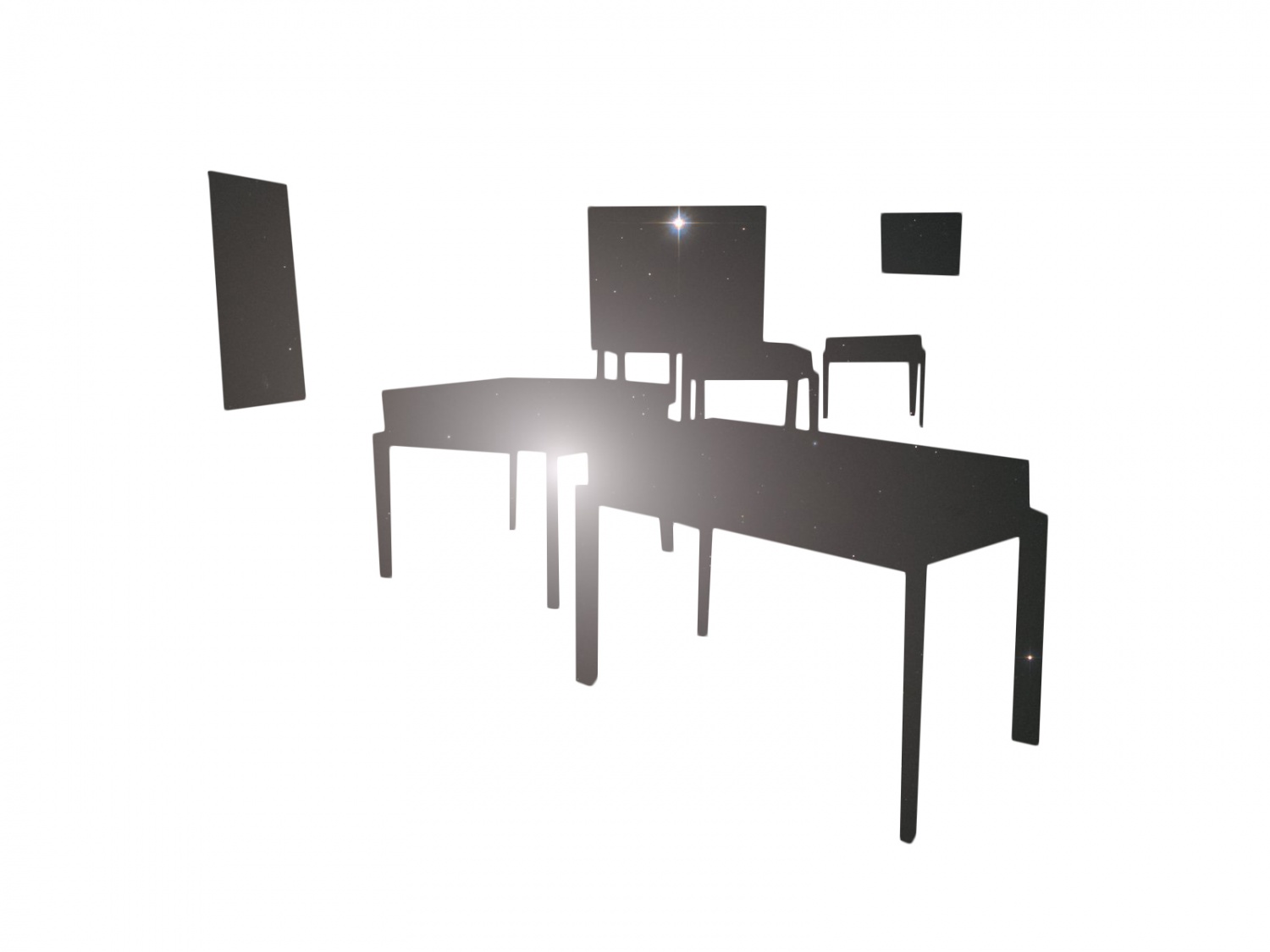
ALEXANDRA SCHUESSLER / NASA
ZETO OR THE PAST LIVES OF ZADIE MUTTERIES
ESSAYS
17.8.2019
SOFIA KOULOUKOURI
1987- : Zadie Mutteries woman, artist, immigrant, megalomaniac
1950-1987 : Laurent, French, classical guitar, user of heroin à contrecœur (not to do with May) Story ends in a fire
1946-1950 : rabbit, shot and cooked alongside a number of its closest friends and family
1945-1946 : tulip in a garden, didn’t survive the summer draught
1900-1945 : no flash
1892-1900 : Kikuyu three-horned chameleon. b. Uganda. Zoo. Star of herpetology dep. Trouble mating. Obesity
1882-1892 : mink, escapee from ranch it was born into. Solitary life in the forest. Long periods of contemplation
1793-1882 : woman that seemed to always have been old
1751-1793 : no flash
1669-1751 : no flash
1578-1669 : Aegidius, alchemist of the Emperor Rudolf the IInd of Prague (also his occasional lover)
1501-1578 : no flash
1439-1501 : no flash
1399-1439 : no flash
1335-1399 : Agnes R, took over her dad’s business and became a stonemason, she didn’t wear a mask, died of silicosis
1300-1335 : Huang, farmer in Kiang province, draught lead to failure of crops, Huang died in the ensuing famine
1256-1300 : no flash
1202-1256 : no flash
1177-1202 : no flash
896-1177 : Greenland shark, his toxic flesh measured 6m, sexually active from his 150th year he met his destiny at 281
821-896 : no flash
800-821 : no flash
747-800 : no flash
706-747 : no flash
703-706 : no flash
664-703 : no flash
593-664 : no flash
549-593 : no flash
489-549 : no flash
452-489 : no flash
390-452 : no flash
367-390 : a charioteer, arrested for a homosexual act, died in the massacre that ensued once people asked his release
337-367 : no flash
272-337 : Flavius Valerius Aurelius Constantinus Augustus was a roman emperor, he only died after being baptized
251-272 : no flash
211-251 : Reporbus also called Saint Christopher Cynocephalus, his dog head became manly, he was beheaded
179-211 : no flash
130-179 : no flash
98-130 : no flash
AD2-98 : no flash
1901BC-AD2 : the immortal jellyfish, transforming its cells it can revert to polyp stage again and again, until eaten
1960-1901BC : no flash
1990-1960BC : a farmer in the Indus Region, contracts leprocy, he is buried in Harappa
2000-1990BC : no flash
2001-2000BC : bacteria Mycobacterium leprae, man of Ahar-Banas people carrying 7 bn. organisms/gr tissue dies, they live
-2001BC : chubby star full of hydrogen fuel, detonates as supernova, particles become neutrons, neutron star born
Zeto is no creature. It hasn’t a face nor fingers; it is not exactly a consciousness. It is a shapeshifter stream of life. The forms it takes are random, they last a lifetime each time. The forms themselves – all sorts of organisms – are unrelated to and ignorant of each other. Yet, like a babushka doll, under the casing each form bears its antecedents. Zeto is just an element amongst millions of other eternal elements. Zeto feels no pain.
The ontological status of Zeto is complicated. Zeto is alive through one representative at a time. It is also alive in the short time between a form’s death and the next one’s birth. Every representative form has a lifetime; once it expires nothing remains of it, normally. Sometimes though, for reasons unknowable, a flash memory of what was before may be conserved. That memory in all its crudeness, exists alone, without the organism to whom it belonged.
Memories don’t get to choose things, or experience pleasure or get a job for themselves. They survive only as a form of –impromptu accessible– data. It is said that the forms who suffered most in their time and especially those that died in torture make stronger flashes that last longer into the future, but that is not exactly true. There is no way of telling why some flashes survive and others don’t, but it isn’t only on account of their dramatic qualities that flashes live on.
An example is due. Laurent lived before Zadie. During his lifetime he was the latest transformation of Zeto, when he burned alive in a fire Zeto took the form of the foetus Zadie. She is now the last of her lineage. Zadie has terrifying flash images of withdrawal, those flashes are not memories of her own, the flashes are actually Laurent’s, his own memories. Zadie has avoided substances all her life. Some call a gut feeling inherent sagacity, but it’s actually inherited. Now a less obvious example. Zadie has flashes of being lethal and well nourished, is it her past life as a population of killer bacteria that infested central India several centuries ago or her life as a shark? One cannot tell with certainty.
The defining principle of elements is that with so many lifetimes per lineage an element changes forms so vastly different betwixt them that it’s been everyone and everything after some eons. It has been human and animal and plant and fungi and bacteria and archaea, it has been male and female and hermaphrodite and asexual, it has seen wealth and starvation, health and malady. That principle makes it that all elements have in common a large variety of lives. Unfortunately this cumulative roleplaying isn’t likely to make forms more sympathetic towards each other because as it has been noted memories are almost inexistent and utterly depersonalised.
Elements go by different names, Zeto, Shrunk, Polli, Mos, Daff, Strat, Olo, Tora, Meno, Shigo, Sham, Psy, Ozmo, Bero, Maff, Ingo, Lal, Ira, Ma, Ine, An, Oxi, Iso, Ano, Prit, Par, Ozmo, Ding, Vol, Mor and thousands more.
Zadie doesn’t know she is just a form of an eternal element. If she had known she would have been kinder, steadier, appeased.
One last thing. Sometimes, very rarely, something attracts Zadies attention, it might be the morning dew on the leaves of a tulip or a shooting star, but sometimes very rarely, it might just happen that a form discerns another form for they have crossed paths sometime in the past.
This chapter is an excerpt from «The Adventures of Zadie Mutteries» (Vol. 1).
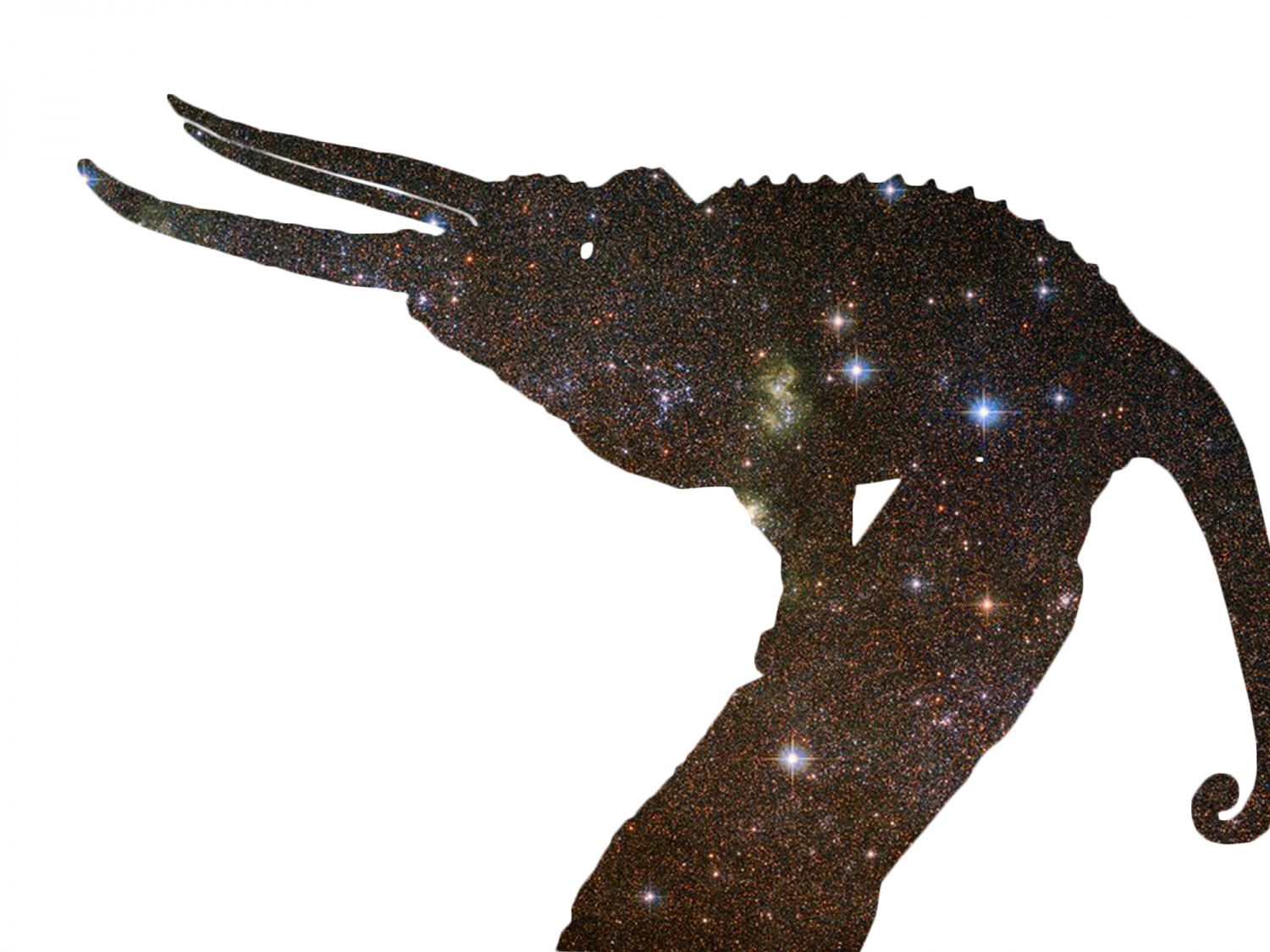
NASA
MUNDUS PATET (THE WORLD IS OPEN) OR THE YELLOW IN THE BLACK HOLE
12.8.2019
CHRISTOPHE DOMINO
Mephistopheles to Faust
“ Up or down! It’s all the same!”
Goethe
It starts in the vicinity of M87*, at the heart of the elliptical Messier 87 galaxy, in the Virgo A constellation, around 50 million light years away. The news is just out, and it is causing a great stir among astrophysicists. The legacy of Einstein’s concepts regarding relativity is not yet about to be overturned. Between dream and computation, nightmare and theory, the idea of the black hole has just made a leap forward. The hypothesis is age-old, and Pythagoras himself would rejoice at it, but an important step forward has been taken in this theoretical knowledge, with great clamour and many echoes right down into the mainstream media, with the press rushing to trumpet the news: because scientific debate and mathematico cosmological speculations have found an ideal adjudicator, one it would be impossible to argue with, proof that is incontrovertible in everyone’s eyes. Yes, eyes: for the key witness, the one that sweeps away sceptics’ doubts and leads experts and the uninformed to agree, and is now seen everywhere, is a photograph. Do we have to call on general knowledge of the photographic field to make the point when common sense recognizes a unique authenticating potential in everything that goes under the name of photography. So there is now a portrait of M87*. Its mass equal to six and a half billion suns, is now contained in a single shot. And it is its photographic form that has ensured its planetary success ever since the scientific community, with an unerring awareness of the fate of images, unveiled it in an organized ritual, revealing it on a large-format screen. The event was on a planetary scale: the international scientific communication of the picture was made by means of six press conferences held simultaneously on 10 April 2019 at six points on the globe: Brussels, Santiago in Chile, Shanghai, Tokyo, Taiwan and Washington.
Of course it will be objected that the equipment used to produce it belongs more to post-photography. It is the product of a device for taking images which goes beyond simple optical logic, being derived from the Event Horizon Telescope (EHT, a promising name), an international network of observatories located right round the world; sharing radio-electrical data and using interferometric computations and an appropriate algorithm, it ended up with this document. Post-photographic and involving a telescope, but linking up with the concerns of landscape photographers and their dependence on the prevailing weather (colour photos are surely more beautiful with sunshine, aren’t they?). Virtual as this device is, it still needs fine weather simultaneously in Greenland, at the South Pole, in Hawaii, Chile and Spain. More than the making of the image here (obtained moreover by superimposing 7 million images), it is the iconic power of the photograph, its diffraction at planetary scale through the media, its potency as a myth which causes attention to be drawn to the cosmic scale. And all this to look at a hole. A black hole.
COSMOS AND MUNDUS
In fact cosmic holes have long been the subject of myth, and the Romans, being pragmatic, brought down to earth what the Greeks identified as the Cosmos, with the omphalos at Delphi marking its centre —— 1, designating the orderly, harmonious organization of the universe, in line with the idea of the “harmony of the spheres”. In Latin it was called mundus. In ancient Rome this was the name given to the umbilicus Urbis, the “navel of the City”. This was a site of half-social half-religious ritual, political and symbolic, “both the symbolic centre of the city and a cosmic centre”, according to Michel Humm —— 2, the historian of Antiquity whose ideas I am by and large following here. “The descriptions of the mundus left by ancient sources are in fact ambiguous: On the one hand it would seem to be a question of a foundation ditch into which Romulus’s companions apparently threw the ‘first fruits’ as well as a clod of earth from their country of origin; on the other it would seem to be an underground cavity which could be climbed down into, but was usually kept shut because it was dedicated to the manes or to infernal deities; it was opened three times a year as a special exception on days marked on the calendar with the letters MP (mundus patet: “the mundus is open”), during which no public or private activity could be undertaken in Rome. [...] The word mundus thus designates both the celestial vault of the world and the opening into the underground world [...]”. In this way the mundus apparently contained a philosophical-cum-political message of Pythagorean inspiration: the order of the world is reflected in it, but also the underground depths, the kingdom of the dead, but also the source of life. This is still according to the sources used by Michel Humm, such as F.-H. Massa-Pairault who specifies how Pluto and Proserpine were celebrated there, symbols of the union of the two parts of the world, chthonian and Uranian, because “the underworld gods are crucial in the founding of cities because they guarantee the reproduction of the generations. They preserve the semina (seeds) and are at the origin of the saecula naturalia (natural generations).” —— 3 Thus the Rome of the 4th and 3rd centuries BC offers a pagan intuition of what astrophysics tends to verify: the cosmic black hole is this kind of double figure where the disappearance of matter and its regeneration are played out, just as the mundus offers the opening leading to the world of the dead and the very possibility of generation.
The mundus is, if I may be permitted this photographic metaphor, a superb pinhole, and like the pinhole it is the site of an inversion: the forces of light are open to their opposite, telluric darkness. This ditch, hollow or dent is made into a temple, and in the geometry of the remotest imaginations marks the passage from the immensity of the skies down to the human scale. Geometry that is played out on all sorts of figures: the vertical axis pointing towards the species, the Platonic ideas, the lodging places of most of the earthly gods. The axis on which ancient totems and today’s telescopes run, but also pagan and modern structures like Brancusi’s Endless Column at Târgu Jiu, or indeed the monumental installations those in power like to indulge in. In Rome as elsewhere, such an axis is obvious only at the point where it intersects with the level of the expanse at my feet: thus each of these umbilici tends to claim to be the centre of the world, a sign of political power, reduced to the fact of being there. So human appropriation of cosmic ambition assumes all sorts of dimensions, and gorges with delight on the vertigo produced by shifts of scale.
FIGURES OF THE UMBILICUS
The spiral adorning Père Ubu’s dreadful stomach denotes both imperial expansion and the despot’s obscene belly, centrifugal and centripetal: it recurs in the self-obsession that the culture of narcissism—to borrow the words used ad a title by Christopher Lasch—tattoos on to so many skins, a self-marking currently in fashion in the human pool, a proclaiming of identity, a self-branding.
The figure of the umbilicus is materialised in all sorts of ways: it is the point of reversals from top to bottom, from outside to inside, of all tilts and of amniotic exchanges. Everything actu- ally passes through the navel. Its use in Freud has great resonance because as the material I freely borrow from the psychoanalyst JeanneLafont ——4 describes, while he uses it to “describe the unconscious process of the dream [it is], because that word already has this enigmatic double quality for him. It [...] seems possible to shed light on it, start- ing from the umbilicus in mathematics, and its fate in the catastrophe theory. [...] The umbilicus in the dream [...] ultimately designates the centre of the unknown which like the anatomical navel that represents it is really nothing other than this void we are talking about, this ‘dream navel’ [...] a point where ‘suffer- ing like a former repressed wish’ is also Desire [...], a special ‘unstable’ point in a system, in the sense of René Thom’s catastrophes” the topology of which includes countless umbilici. [...] “For psychoanalysis, the umbilicus is a system’s point of instability, always moving. [...] In this area of the system’s instabili- ties, there are catastrophic points, i.e. points of extreme instability, which are thought of as limits. The suffering/desire umbilicus is one of these.” Let us leave it to psychoanalysis to endeavour to give shape to these shifts between body and the world and back again; we may envy it the freedom it allows itself to move in turn through symbolic and mythical systems, and somatic and cosmogonic ones. But we will return to the visual field.
FROM OBSERVATION TO BEGETTING
Our passion for looking reached a notable staging post with the practice of photography, and optical experiments have constantly, and with endless advances fed this capacity to both compress and expand space, to experience this switch from the infinitely large to the infinitely small, and back again. Machines for seeing, such as were known in particular in the 17th century in Holland, would thus ensure the continuity from the macro to the micro and back again which Antiquity had prefigured. —— 5 If observation is aided by instruments, it tracks this shortcut, between science and charlatanism, between the cosmic dimension and the teeming lives being played out under our eyes. Like everyone else Van Leeuwenhoek would no doubt be amazed if confronted with this image of M87*. Interweaving Rembrandt and anatomical investigation, Vermeer and his camera obscura, Spinoza who polished lenses, with Leibnitz looking over his shoulder, Van Leeuvenhoeck, at the heart of 17th century Holland, observed everything that could be observed, and even more. For a time he was a land surveyor attached to the town of Delft, and he wrote about the comets in the skies of Europe. But it is where smallness is concerned that his work stands out, as the inventor of the microscope and a tireless observer of minuscule crea- tures, an explorer of the world invisi- ble to the naked eye. His biographer, Philippe Boutibonnes —— 6, locates him in his political and intellectual as well as his religious and scientific context. And it is that crossover that makes him remarkable, through his technical and methodological inventiveness and the importance of his discoveries. “In the new practice of observation which is obliged to use ‘optical machines’, the eye is as if detached from the body [...]. —which would lead Svetlana Alpers to say that the microscopic image is produced ‘by a disembodied organ.’—. —— 7 The gaze is then capable of perceiving the structure and the movement of the ‘glob- ules’ of which each body, be it dense or porous, is composed. But the change of scale which makes the arrangement of matter perceptible to the observer plunges him or her, and Leeuwenhoek first and foremost, into a ‘different worldfromotherpeople.’ ——8” ——9 It is Leeuwenhoek who discovered and identified spermatozoa in seminal fluid; and even drew them on 18 March 1676. One of the mysteries that preoccupied Van Leeuwenhoek (and his contemporaries as well) was that of begetting. Is it possible to imagine that it took this experimental dabbling with body fluids to establish a scientific understanding of begetting? Between the plunge into the invisibility of the mundus and the dive into the viewing of organic matter, begetting came under blind knowledge nonetheless adequate to ensure the perpetuation of the species. “All crea- tures copulate, from the most beautiful to the most horrible; the louse, the flea and the maggot like human beings, are provided with genitals. [...] They all, such as they are, quadrupeds or vermin, at their maturity produce little worms; it is through them that offspring are created, and this is the only way it happens. So why should it be necessary to resort to trickery, to this improper begetting, to begetting without parents? No, there is only one means of procreation. We have to believe it. The price to be paid for sticking to this is the abandonment of some of our dreams.” —— 10 The microscope brought down to earth life that was subvisible. Ideal procreation, an immaculate means of conception, vanished under the observer’s lens. Cellular union tied together the living, which unfolded through the cord, the umbilicus that every stomach bears as that point of contact of dimensions that were henceforth ever more measurable.
FROM SEMINAL FLUID TO THE BLACK HOLE A RETURN JOURNEY
At a time that cannot be pinpointed, undoubtedly in the future but a future not very distant from our own time, in an ordinary space the austere interior of a technological architecture, already marked with a patina by use, a young taciturn man is living, watching over a baby. A prison environment, without night and day, bathed in gloomy electric light. A penitentiary colony, a space ship launched into galactic space on a quest with no promise of success. It is the glutinous time of long-term prison crossed with the immeasurable time of interstellar travel with no fixed destination. In High Life Claire Denis plays tricks with the genre she is working in, science fiction movies: an imaginary world outside the frame, which the film is attached to only by a few poor signs, space suits, computer screens, an occasional view of the lacklustre vessel in the half-light of space. On board, without any specific reference to their criminal past and without naming the possibility of a future, are a number of haunted women and men. They include the on-board female doctor on an obsessional mission no doubt devised by herself involving the collection of sperm and procreation, which is forbidden to her. The situation and characters lay bare the relationships between desire, pleasure, sex, fornication, procreation, and love, redistributed outside the earth’s social standards and rules. The severance of the link of the human with the Earth and the travel outside time, in conjunction with the prosaic handling of the story and the frontality of the characters make the film a powerful parable which in turn brings into play the scale of bodies and worlds, seminal fluid and interstellar space. Filial begetting is redolent of conception that is not immaculate as those before Van Leeuwenhoek might have thought, but of a disruption, a de-naturing of the principle of fertility that upsets the generational order. A father and his daughter are condemned to the Garden of a cosmic Eden which leads them straight into the vertiginous and devouring dimension of the eye of a black hole. The film provides the complementary figure to that produced by the EHT: the black hole in the image takes on the aspect of a ray of yellow light an illumination. ——11 The tension between opposites the irreducible chiasmus between birth and death, between the seen and the invisible, between what is beyond measure, the time of light and the time of love, with all that can be known known, everything that can be made familiar familiarised, will not yet have found a resolution, any more than the fate of the heroes of High Life.
When the Mundus was open it remained a black hole, leaving space for the imagination, relying on works of art and the intellect, on the doubling of fiction, metaphor and symbolic production as a vital condition. Lyotard noted in the course of a paragraph in Discours, Figure —— 12 entitled “Parenthèse sur le peu de réalité” [Parenthesis on the shortage of re- ality]: “A very slight difference between being in the moon and on the moon” [Très mince différence entre être dans la lune et sur la lune].
——1 Umbilici and omphaloi are figures anthropologists are very familiar with; in the case of the Greeks, it all starts with a story of begetting and a mother’s wiles on the part of Rhea to save Zeus from being devoured by his father Cronus; in the case of the Celts, cf. e.g. L’omphalos celte, kindly pointed out by Baptiste Gille. https://www.persee.fr/doc/rea_0035- 2004_1915_num_17_3_1869 viewed on 10 April 2019.
——2 I owe the view of Rome to an article on Antiquity by Michel Humm (in the journal Histoire urbaine 2004/2 (no. 10), pages 43 to 61, accessible on https://www.cairn.info/revue- histoire-urbaine-2004-2-page-43.htm#no26
——3 F.-H. Massa-Pairault, quoted by Michel Humm, op. cit.
——4 Jeanne Lafont, Ombilic du rêve, comme catastrophe – Angoisse et Désir Colloquium 15/09/06. https://docplayer.fr/29927504-J- lafont-ombilic-du-reve-comme-catastrophe- colloque-angoisse-et-desir-15-09-06-1.html, viewed on 23 March 2019.
——5 Cf. Machines à voir pour une histoire du regard instrumenté (XVII–XIXe siècles), an anthology of texts on real or imaginary viewing instruments, for science and for show business. Edited by Delphine Gleizes and Denis Reynaud, Presses Universitaires de Lyon, 2017, Lyon.
——6 Philippe Boutibonnes,VanLeeuwenhoek, l’exercice du regard, Belin, 1994, Paris. It should be noted that the author led a double life as a university academic specialising in microbiology and an artist. His work is mainly in the graphic field, between writing and painting, not unconnected with his concerns as a biographer.
——7 Philippe Boutibonnes quoting Svetlana Alpers, L’art de dépeindre, la peinture hollandaise au XVIIe [1983], Gallimard, 1990, Paris.
——8 Philippe Boutibonnes quoting Locke, An Essay concerning human understanding [1689], 1972, Vrin, Paris.
——9 Philippe Boutibonnes, op. cit., p.9 17
——10 Philippe Boutibonnes, op. cit., p. 238
——11 Claire Denis has indicated that the saturation in yellow, a colour excluded from the film set, was decided in collaboration with Olafur Eliasson. So it is the artist’s colour that turns up to fill the moment of light, thus challenging the astronomers’ light years.
——12 Jean-François Lyotard, Discours, Figure, 1985, pub. Klincksieck, p. 285
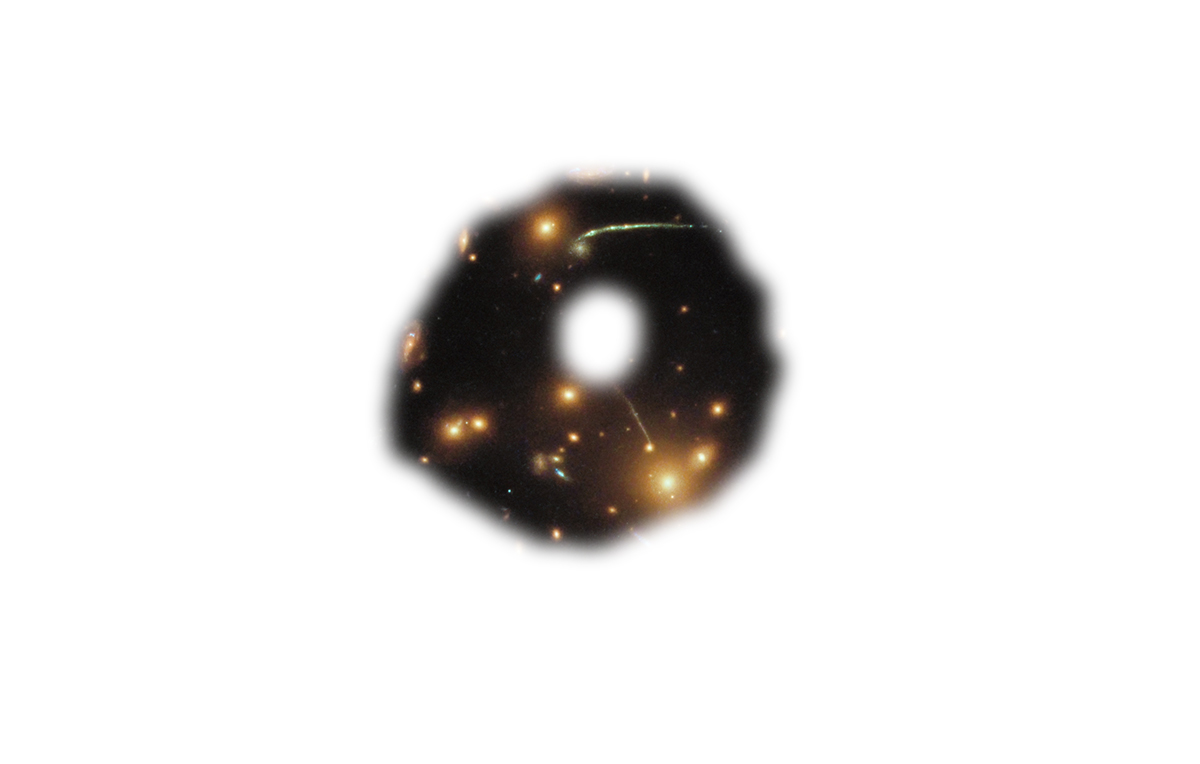
KATIE BOUMAN / NASA
OSMOSCOSMOS EXHIBITION CATALOGUE
OSMOSCOSMOS
08.8.2019
SÉBASTIEN LESEIGNEUR
The Centre la de photographie Genève would like to thank all the artists and their assistants gallery owners and partner institutions for their generous collaboration.
Every effort has been made to contact copyright holders.
Any copyright holders we have been unable to reach or to whom inaccurate acknowledgment has been made are invited to contact the Centre de la photographie Genève.
Concept & Graphic Design
Nask, Geneva
© 2019 for the texts: The authors
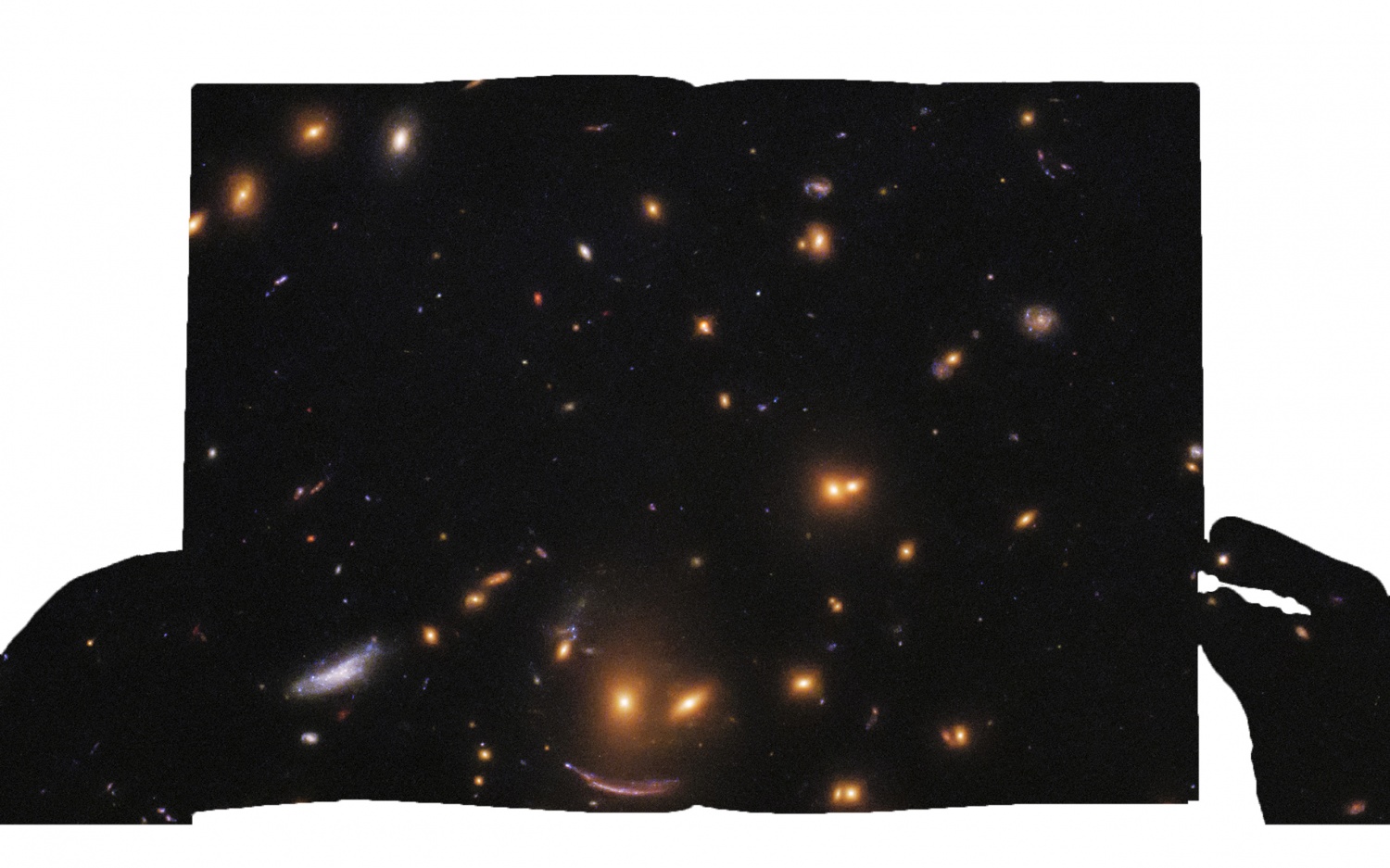
OSMOSCOSMOS / NASA
SORTIR PAR LES CIEUX / COMMENT RESTER BELLE PENDANT L'APOCALYPSE ?
ESSAYS
04.8.2019
SOPHIA DJITLI
« regarde elle a les yeux grand ouverts, selfie, je préfère fermer les yeux, je sais pas pourquoi ils tiennent à garder les yeux ouverts quand on baise et leurs visages qui se déforment, absolument j'ai remarqué la même chose, je vois pas, je vois pas où tu veux en venir, ça fait un bon déséquilibre, alignement désastre, le retour à la névrose originelle quoi, comme une fibrose cicatricielle autour de mes ovaires intergalactiques, la communauté désossée s'est consolidée comme une blessure, la blessure de l'absence, la puissance de l'absence c'est de se reproduire, on a rendu les clefs, ça va tu survis avec la canicule ? ouais je suis dans un trip fond du lit, fin du monde, le truc s'est désintégré il y a un bail, la communauté constituée autour de__ avec mes ovaires s'est dispersée, on a fermé, depuis on tente de réfléchir par le négatif par exemple si belleville est le centre du monde et que le nez de cléopatre, même si la communauté exclut l’immédiateté qui affirmerait la perte de chacun dans l’évanouissement de la communion, elle propose ou impose la connaissance de ce qui ne peut être connu : ce “hors de soi “ (ou le dehors) qui est abîme et extase, la fécondation collective, l'avortement collectif, tout le monde s'est barré de paris, c'est de la science fiction, les hommes marchent sur la lune avec ou sans ketamine, défaire le genre par les étoiles, ça fascine l'anesthésiste cette histoire, combien le gramme oui, nooo, c'est pas liquide, c'est de la poudre, et la pute à la caméra se remet du rouge à lèvres, selfie, anesthésie générale, grève des réseaux sociaux, en regard d'une telle impossibilité, la Raison, au service du présent, devient une imposture totale, pour les masses, le rouge ne va pas avec le rose, en résumé, le mythe lui-même est déjà Hystérie et l'Hystérie se retourne en mythologie, un doigt pendant les dernières minutes discrètement avant la fermeture, un deuxième, on va fermer là, l'odeur intime de l'exposition, le banc mouillé face à la vidéo des experts, nous voilà sommées de discuter autour d'une boisson dûment tarifée par exemple si belleville est le centre du monde et que le nez de cléopatre est en porcelaine, peut-elle jouer la princesse au petit pois, aux faux cils et au marteau, on le déglingue à coups de shoot hormonal, le truc s'est désintégré, reste une possibilité à céphalées, vous reprendrez bien un peu de morphine au réveil, salle de réveil où la vie a toujours lieu dans un tumulte sans cohésion apparente mais elle ne trouve sa grandeur et sa réalité que dans l'extase et dans l'amour extatique, finalement tout tourne autour encore et toujours autour de l'anus solaire de paul bataille, on disait il y a des priorités en politique, genre comment rester belle pendant l'apocalypse, le truc avec toi c'est qu'on n'arrive pas à savoir si t'existes vraiment, ta présence est immatérielle, en trois mots, vouivre, nymphe, sylphide, en gros pour toi la' femme c'est de l'antimatière, elle nous hante depuis six mois, c'est le même principe pour toutes les luttes minoritaires, la magie est une sanglante falsification, le mythe lui-même est déjà Raison et la Raison se retourne en mythologie, essentialisme stratégique quantique en quelques points, on dirait, concentré d'hormones+ faux cils + marteau, anyway pendant l'apocalypse, désopasdéso, alignement désastre, le rapport de force reste en faveur des sorcières qui brulent déjà depuis longtemps en pls, pms, prepare to meet satan, tmtc, les premiers pas sur le bucher, ou, dans une version retrofuturiste, les hommes marchent sur la lune et je leur marche dessus avec mes hauts talons chimiques, je grandis, j'aggrandis ces trous d'aiguilleurs du ciel, défoncée à l'opium, tout le sang recouvre le ciel, j'agite les lasers de l'épilation définitive, la plaine, le soleil est devenu rose, doux, choux, crépuscule des idoles no way, peut-être à l'aube éventuellement, réapparition de la fratrie, nous sommes encore ensemble parce que nous ne sommes rien, la communauté par son absence de centre et de communauté, la communauté absente à elle-même, une communauté c'est souvent une sorte de moment falaise pour un individu, on le sait bien ça, on vivait pas en-dehors, on vivait à l'extrémité du monde, noborder pour la mort et la folie, la première fois que je t'ai parlé de blanchot, tu m'as dit que c'était un truc de babtou fragile, oui oui c'est une discussion fondatrice, celle qui m'a fait me dissocier du parti, c'est surtout que c'est la seule partie de mon corps de cyborg que je peux pas arroser, mon téléphone, l'organe pour penser en gros l'histoire du transcommunautaire comme une affaire de pouces, c'est à dire que l'intergalactique nous protège de la tragédie des têtes, planète polymorphe, ovaires polykystiques, de la définition en négatif c'est dire plus simplement que le polyamour préserve de l'espoir vain de fusion, comment rester belle pendant l'apocalypse, baiser en acéphale, au moins la première fois, collectivisation des jouissances, mise en commun des fluides, voix lactées, sortir par les cieux genre météorite-sorcière-in-communiée ou tenir le comptoir, arroser les fidèles, pour le rhizome d'ovaires désertés prêts à envahir le monde, les voilà nus, insacrifiables, sacrés et homo, esseulés, 42 degrés, la vie nue, la communauté censée renaitre de ses cendres, la force en suspend, c'est merveilleux la vie nue mais la vie vulnérable, du coup, de baguette au coup de balais, l'occident expérimente enfin la fin du monde, brulons ensemble, ça pourrait être une pub, le truc s'est désintégré et la communauté comme une fibrose autour de mes ovaires s'est consolidée comme une blessure. »
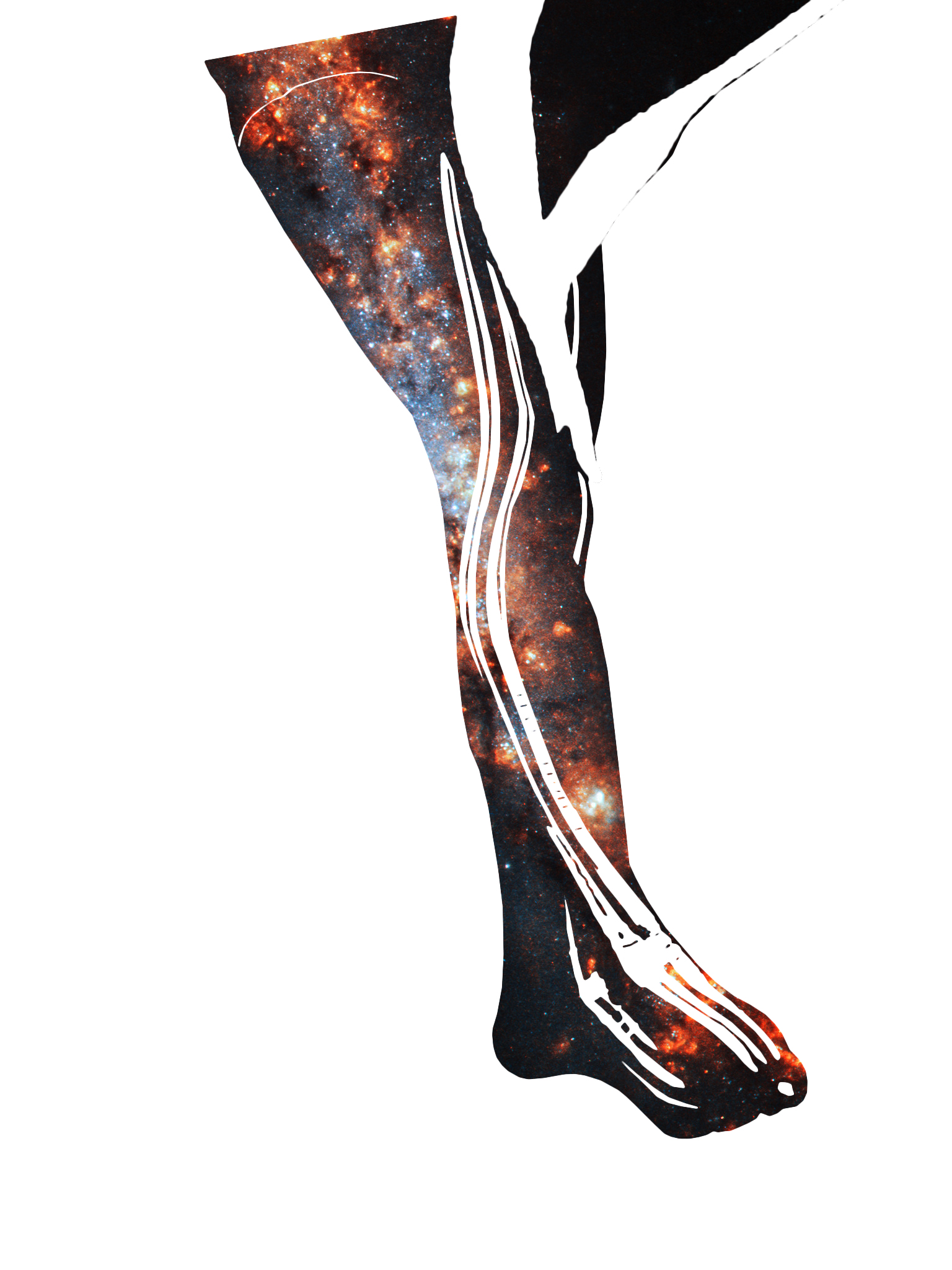
SOPHIA DJITLI / SÉBASTIEN LESEIGNEUR / NASA
HIVER AUSTRAL - 3E PARTIE
ESSAYS
30.7.2019
THÉO-MARIO COPPOLA
Présentation
Hiver austral est un poème en prose, écrit au futur. Il est composé de trois parties de longueur différentes. Dans un premier temps, le poème raconte la solitude du narrateur face à un immeuble, vu de l’extérieur, dans la ville de São Paulo. Un interlude propose une version alternative : le narrateur est accompagné. Dans un second temps, le narrateur, désormais à l’intérieur de l’immeuble invoque les stimuli perçus depuis l’appartement, émanant de l’environnement extérieur. La circulation en images et en métaphores, entre l’intérieur et l’extérieur de l’immeuble est évocatrice d’une sensualité retrouvée. Dans un troisième et dernier temps, le texte se réduit à deux phrases, composée d’éléments prélevés dans l’ordre chronologique du poème, dans une synthèse expérimentale de l’ensemble. Cette dernière partie célèbre l’unité que forment cosmos et éros.
3e partie
Par un hiver austral, suspendus dans un temps sans frontières, près de nous, iront profondes et chargées, les tendresses, caressant l’intérieur dans les vacarmes du vent. Derrière les yeux noyés, dans la pénombre d’une chambre bleue, m’attendra la bouche de l’autre Cosmos.
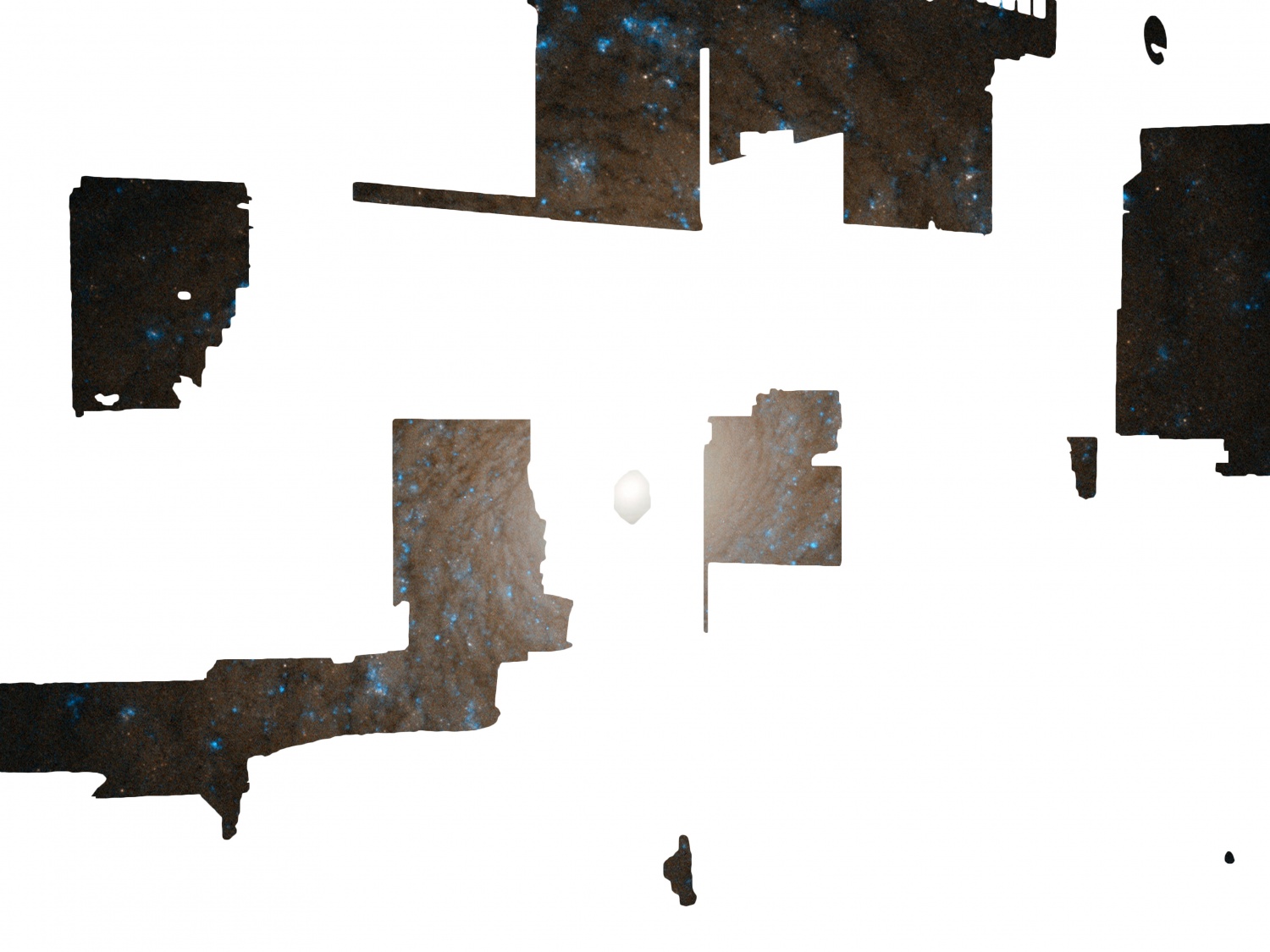
FLORESTA_TMCOPPOLA_2019 / NASA
LIVING CAMERA
ESSAYS
27.7.2019
SÉBASTIEN LESEIGNEUR
A cupboard appeared in a corner of my bedroom. I had never noticed it before now, I open it. Inside there are binders and archives, a stereotypical vision of stacked papers with no use. In the middle of all the mess there is some kind of black box, it turns out to be some kind of medium format camera, similar to one of those large Fuji-Telemetric cameras. I take it and leave my home on a rainy, spotted and gray street of Paris. I try to use the camera. There is already a roll of film loaded within. Cars pass, the shutter button feels awkward under my finger; I take multiple exposures without noticing. My view of the street is opaque, and even foggier through the viewfinder. Hoping to get away from the dark street, I hop into a wet bus, filled with students and senior citizens. I take a seat at the front of the bus, just near the driver. The windshield-wipers seem to be out of order, the driver rolls along blindly, only able to estimate the road and it’s obstacles by the lights of the cars before him. The red brake lights appear to multiply from the center of large raindrops on the bus’ windshield as if looking at them through the eyes of a fly. I photograph the seemingly deformed passerby’s. The walls along the sidewalk are completely covered with graffiti, huge sprayed-on letters and fantastical characters. The bus picks up speed and it’s like an old surrealist film projected before my eyes, the dreams and the thoughts of the citizens taking form on the very walls they walk before. I think of the large size of the film inside my camera, the brimming liquid details, mixing with the grain of the negative. Is the film color, or black and white? I see big images filled with heads, drops of rain, multi-colored backgrounds stained with gray light reflected from the sky and off the windows of the bus. These images create a soreness from my retinas all the way to the back of my skull. There is an overwhelming fuzziness to the pictures from which the details and glances seem to become lost within themselves as if intentionally avoiding to be seen.
I notice suddenly that there is some kind of thick hose coming from my camera, a supple and grooved black tube of maybe 30 cm working as a sort of suture between my black-box of a camera and a second, similar only smaller box. The object in my hands has become something completely bizarre: the supple hose has wrapped around itself in every which way and I can see the little cables of it’s interior, and the two objects seem to be completely dependent from one another.
I eventually find the brand in big letters, ‘MACHEETAH’ (like Tarzan’s monkey who just died). I snap out of the distraction of inspecting the strange object and take a picture of the back of the bus. The passengers seem lost, almost glued against the windows fogged by their own collective breath. The air feels tropical.
The bus comes to a stop allowing passengers to get off, and from behind the trail of those descending a dog climbs alone onto the bus before the door closes. The driver continues. The dog, a blond labrador, sits on an open seat behind me. I start to turn around to take the dog’s photograph only the recent evolution of my camera embarrasses me too much to do so. I decide to try to separate the two parts of the object, by force if need be. Just when I start to pull apart one piece from the other, the dog rests his head on my shoulder. I turn around to look back at the dog who stares back a sort of scowl. His face is expressive, and this expression makes me rush to separate the camera in two. I quickly realize I’ve broken it.
The bus stops again. The dog gets off and I follow him. We are at the Place de la Bastille and the square is black with people like locusts, there is a sort of political assembly happening. I notice flags and banners in all directions while a voice is giving some kind of speech I can’t quite make out. The dog disappears into the crowd as if penetrating a jungle. I struggle, drowning myself in the boiling sea of men and women, my arms stretched out above my head to support and protect the bulky and now worm-like double-camera that begins to wiggle around, agitating and squirming between my hands. Flashes of light escape from the apparatus and I seem to have no control over it, by its own will it photographs the crowd and the city square. The speech arrives at its climax and the people rejoice in forceful gayety, the red flags seems ready to dive with the people of the city into a great fire of joy. It is then that the sublime, unthinkable happens to me: I can see right through the object in my hands. A stereoscopic vision of the people and of the world takes over me, the human-multitude becomes cosmic, an incomprehensible dimension. I see a thick, colored and sparkling magma spread itself around the crowd, hazy and light like nebula from which escape living frescos, scenes out of time and space.
And this crowd from within which I found myself (transported with me from Bastille in this turbulent, cosmic injunction) emitted from themselves the same strength like an infinite echo transmitted to other crowds similarly escaped from these frescoes of which the colors became almost bloodthirsty as the scene progresses. I could no longer tell if I were dead or alive, in danger or in the downy safety of a dream.
From the sky there is a sudden downpour, tearing me from my hallucination. All around me, I see nothing more than arms waving in the air and millions of shining, dripping faces all exulting pleasure. The shower suffocates the blaze of fire flags.
December 30th, 2011. Lausanne. April 9th, 2012. Stuttgart. July 27th, 2019, Vevey.
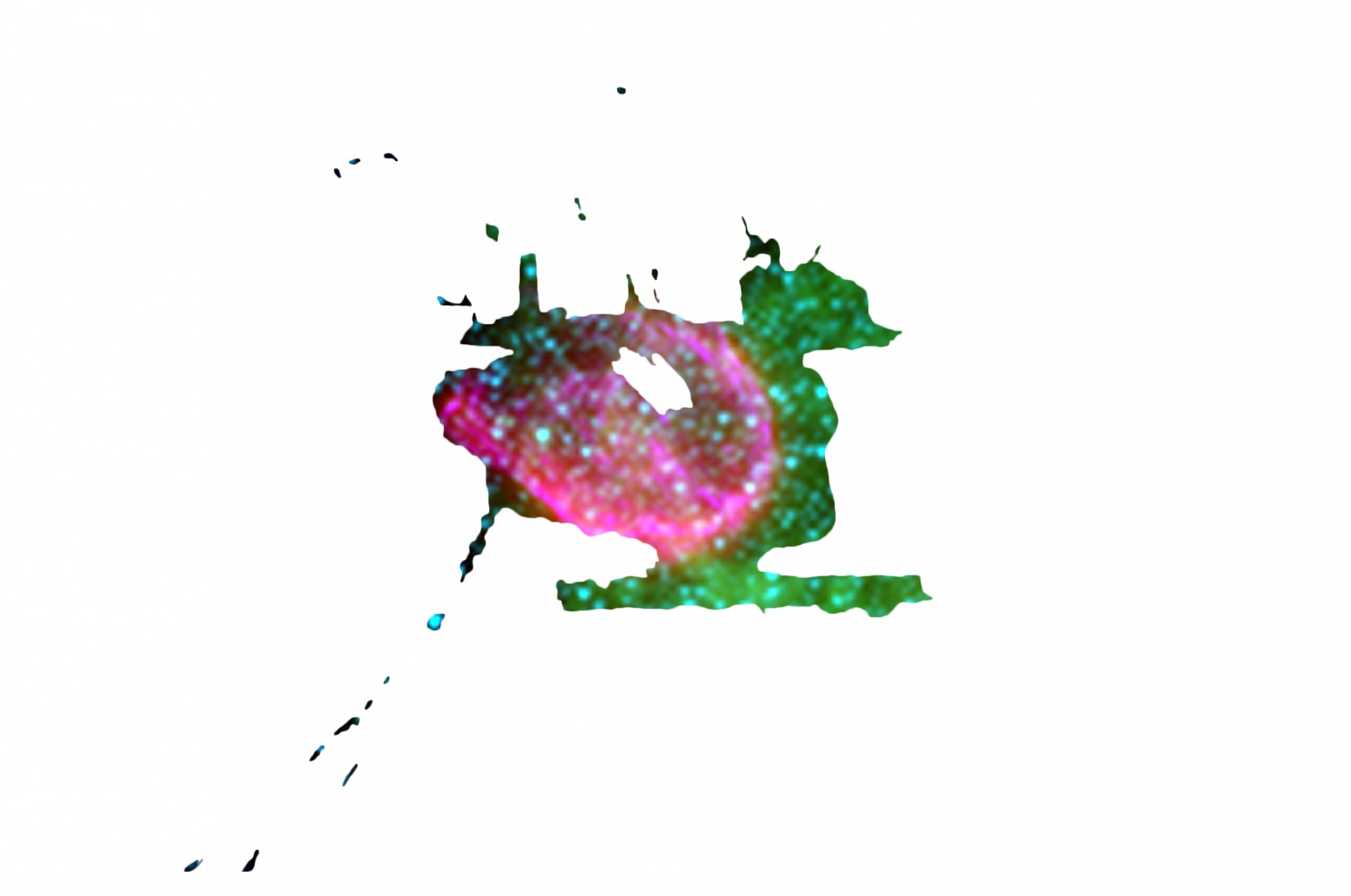
SL / NASA
HIVER AUSTRAL - 2E PARTIE
ESSAYS
22.7.2019
THÉO-MARIO COPPOLA
Présentation
Hiver austral est un poème en prose, écrit au futur. Il est composé de trois parties de longueur différentes. Dans un premier temps, le poème raconte la solitude du narrateur face à un immeuble, vu de l’extérieur, dans la ville de São Paulo. Un interlude propose une version alternative : le narrateur est accompagné. Dans un second temps, le narrateur, désormais à l’intérieur de l’immeuble invoque les stimuli perçus depuis l’appartement, émanant de l’environnement extérieur. La circulation en images et en métaphores, entre l’intérieur et l’extérieur de l’immeuble est évocatrice d’une sensualité retrouvée. Dans un troisième et dernier temps, le texte se réduit à deux phrases, composée d’éléments prélevés dans l’ordre chronologique du poème, dans une synthèse expérimentale de l’ensemble. Cette dernière partie célèbre l’unité que forment cosmos et éros.
2e partie
À São Paulo, au 21e étage de ce même immeuble, suspendus dans un temps sans frontières, entre un pays d’Europe et la terre d’arrivée, nous secouerons la fatigue que les voyageurs traînent, sur des draps à rayures, que l’ombre et l’odeur du café importé balayeront.
Du couloir court et sombre viendront les éclats de voix, les échos de pas, les tintements de clefs qui animent les couloirs de tous les immeubles. Dire “de tous les immeubles“, c’est penser “c’est sans doute le cas partout“. Dire “de tous les immeubles“, c’est se résoudre à croire que la réalité d’un ailleurs n’est peut-être pas définitivement différente de notre propre quotidien.
Par la fenêtre ouverte, derrière son store aux lamelles abimées, nus, lavés par l’aube pâle, nous interprèterons les cris, les vrombissements, les atterrissages, les jappements, les crissements, les bourdonnements. Tout un autre monde, près de nous, dans lequel nous ne prétendons plus être, avec lequel nous devons être. Les tendresses urbaines n’ont pas leur nom. Elles ne se reconnaissent qu’en déplacement. En quittant sa ville, l’on retrouve la mécanique des habitudes. Par apprentissage. En s’installant, même provisoirement, c’est la même chose. L’on explore les alentours après les avoir doucement regardés. L’on se donnera alors le droit d’imaginer ce qui peut convenir. Puis, l’on répétera les expériences. Comme cela, presque sans y penser, l’on redeviendra, en une autre ville, un habitué. Nous aurons peut-être cette envie. Quand nous arriverons, nous ne saurons pas ce que nous voudrons.
Les caisses de vertiges iront profondes et chargées. Dans l’immeuble, grand, immense, peut-être insaisissable, les ascenseurs rouillés, voilés, reviendront aux étages supérieurs après des plongées sidérantes, gonflés de la vitesse moderniste. D’étage en étage, ils iront encore, ballotés par les rouages anciens ou remplacés. Du deuxième sous-sol au 38e étage, caressant l’intérieur d’un long et courbé paquebot de béton, il traîneront avec eux les habitants seuls ou en grappe. Comme le drap lâché au vent, le bâtiment secouera ses plis dans les vacarmes du vent. Il détendra ses ourlets sur l’Avenida Ipiranga.
Derrière les yeux noyés par la fatigue heureuse que les plages de la Méditerranée n’auront jamais pu promettre, le café m’attendra. Dans la pénombre d’une chambre bleue battue par les vents, les soupirs répétés appelleront la bouche de l’autre que j’aime. Edifìcio Cosmos. Blocco F.
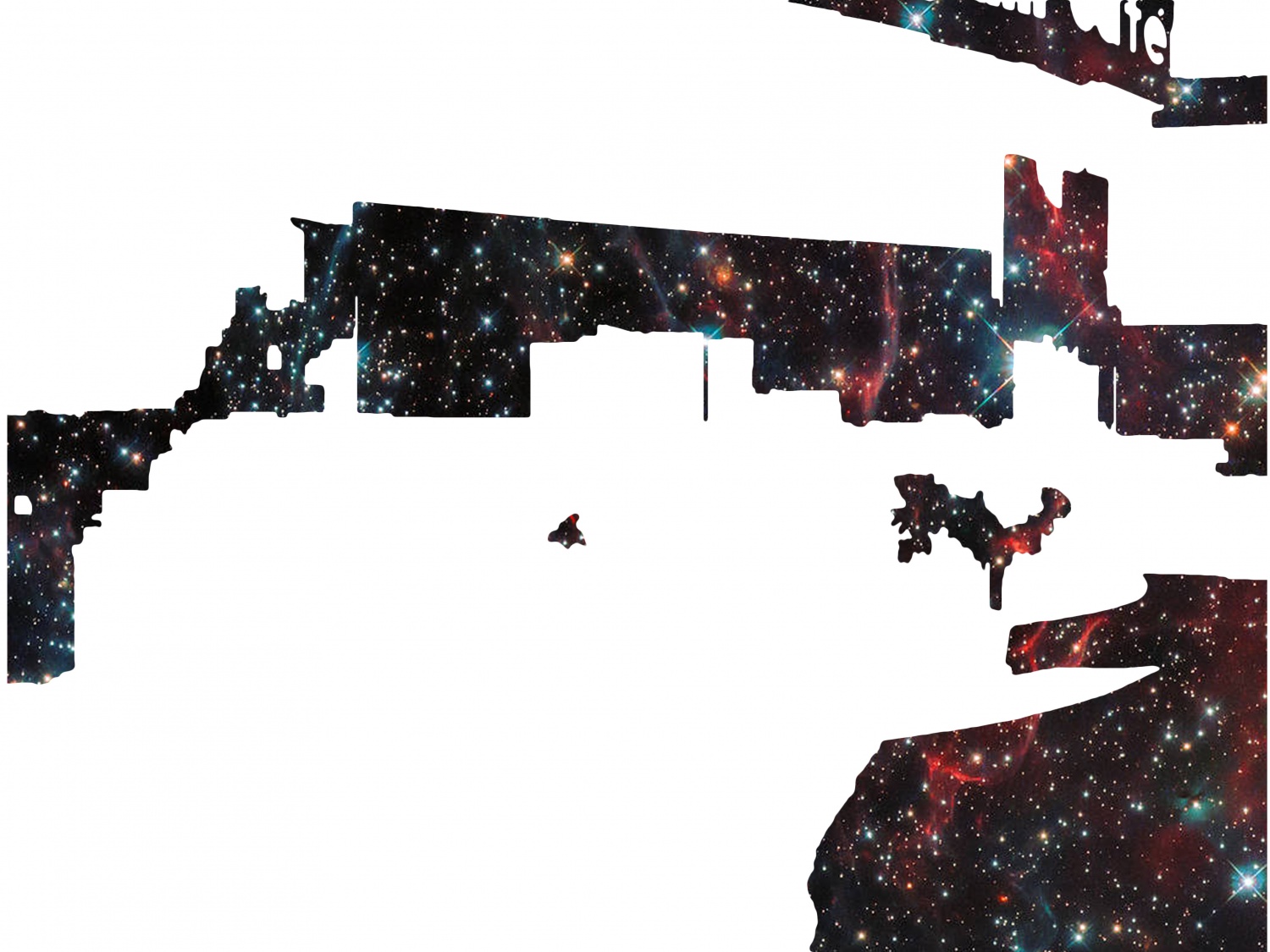
FLORESTA_TMCOPPOLA_2019 / NASA
CATHERINE RADOSA CLITO - ENQUÊTE ET RECONQUÊTE (MICROMONUMENT POUR LE CLITORIS)
OSMOSCOSMOS
18.7.2019
CATHERINE RADOSA
VIDÉO / CONFERENCE IN FRENCH 23.06.2019 / CPG
The idea behind the lecture/workshop "Clito - enquête et reconquête (micromonument pour le clitoris)" being given by the artist Catherine Radosa, whose video "Motherland" (2019) is featured in the OSMOSCOSMOS exhibition, was prompted by the observation that the clitoris, although half of the human population has one, is invisible, or almost invisible. For it is something that is erased, denied representation, and methodically made invisible. Whereas the penis and phallic shapes are established, assert themselves, its female counterpart remains ghostly; it has been the object of misconceptions and demonization in history, and this is still very much the case today. How can we be surprised at this when school textbooks have made it completely disappear? When its reappearance is recent and still timid, in France in any case. When even the teaching of medical anatomy is grudging in according it its proper place.
So what is it like? Where is it? What does it do?
Catherine Radosa sets out to reactivate its symbolic and sensory potency. After the story of an inquest searching for the lost clitoris (in school textbooks, minds, and even in public space), but also of its appearances, the artist exhibits some of her research work and output on the representation of the clitoris and suggests a method for using it, a series of actions, objects, gestures to be shared (for all ages), in order collectively to create a micro-monument to the clitoris.
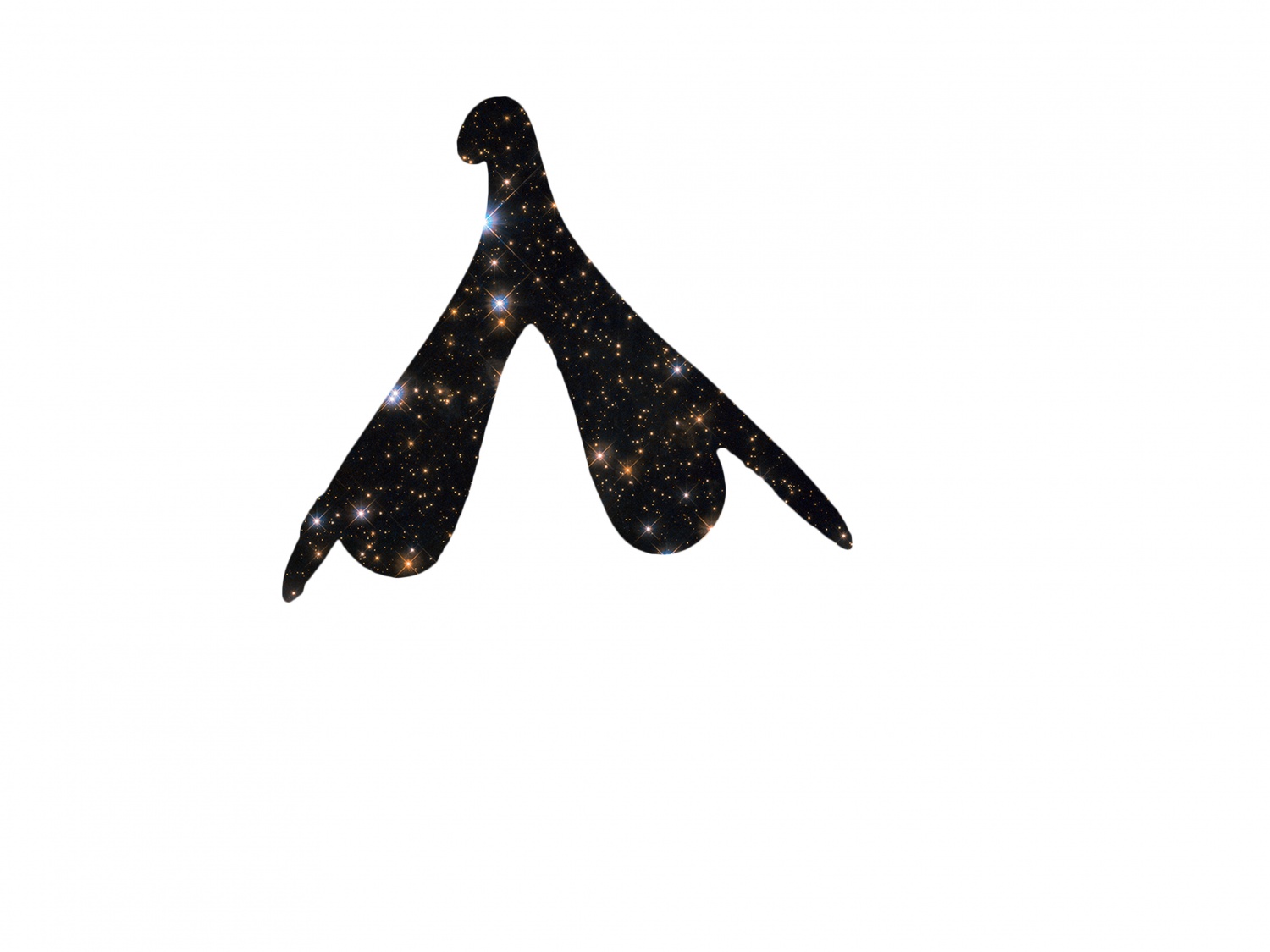
NASA CLITO
HIVER AUSTRAL - 1E PARTIE
ESSAYS
14.7.2019
THÉO-MARIO COPPOLA
Présentation
Hiver austral est un poème en prose, écrit au futur. Il est composé de trois parties de longueur différentes. Dans un premier temps, le poème raconte la solitude du narrateur face à un immeuble, vu de l’extérieur, dans la ville de São Paulo. Un interlude propose une version alternative : le narrateur est accompagné. Dans un second temps, le narrateur, désormais à l’intérieur de l’immeuble invoque les stimuli perçus depuis l’appartement, émanant de l’environnement extérieur. La circulation en images et en métaphores, entre l’intérieur et l’extérieur de l’immeuble est évocatrice d’une sensualité retrouvée. Dans un troisième et dernier temps, le texte se réduit à deux phrases, composée d’éléments prélevés dans l’ordre chronologique du poème, dans une synthèse expérimentale de l’ensemble. Cette dernière partie célèbre l’unité que forment cosmos et éros.
1e partie
Par un hiver austral, j’apprendrai qu’un immeuble peut être à lui seul un monde et posséder son propre code postal. Il sera un immeuble connu, dans lequel on aurait plaisir à se promener. Ou bien, il sera une œuvre de fiction, une béance au croisement de grandes avenues, avec sa chaussée brutalisée. Il sera ce que l’on veut bien faire de lui et ce qu’il accepte en retour de devenir pour nous.
Je croirai sans doute être venu ici plus de fois. Pourtant cela n’aura fait que quelques années. Quelques années, c’est une façon de tout dire en réduisant beaucoup. C’est une manière de ne pas dire grand-chose. C’est une expression pour rester vague et fuir les questions. C’est ainsi que l’on reste seul. Seul, au milieu de quelque chose. Dans une ville.
Toujours seul.
Toujours seul et pour de brefs séjours.
En Avril, dans le soleil.
En Avril, dans le soleil quand sur les trottoirs accidentés coulent le goutte-à-goutte des climatiseurs.
Puis, un jour, baigné par les pluies qui font cesser les fluides internet, je reconnaîtrai des rues déjà traversées, des avenues autrement parcourues, des places souvent gorgées de la vigueur incertaine des énergies inquiètes. Celles, troublées des personnes ici résidentes, ici passantes. Dans une petite voie lactée bruyante entre la Consolaçao et la Place de la République, je retrouverai d’autres lieux reconnus ou vécus. Je penserai à d’autres républiques, à d’autres places et à d’autres pays où nous nous agitons aussi parfois. J’apprendrai que le code postal de l’immeuble est le 01066-900. J’apprendrai que cet immeuble, d’une hauteur de 140 mètres aura été construit entre 1957 et 1966.
Interlude
Puis, un jour, en hiver, baignés par les pluies qui font cesser les fluides internet, nous reconnaîtront des rues déjà traversées, des avenues autrement parcourues, des places souvent gorgées de la vigueur incertaine des énergies inquiètes. Celles, troublées des personnes ici résidentes, ici passantes. Dans une petite voie lactée bruyante entre la Consolaçao et la Place de la République, nous retrouveront d’autres lieux reconnus ou vécus. Nous penserons à d’autres républiques, à d’autres places et à d’autres pays où nous nous agitons aussi parfois. Nous apprendrons que le code postal de l’immeuble est le 01066-900. Nous apprendrons que cet immeuble, d’une hauteur de 140 mètres aura été construit entre 1957 et 1966.
à suivre
Paris-Genève-São Paulo, Juin-Juillet 2019
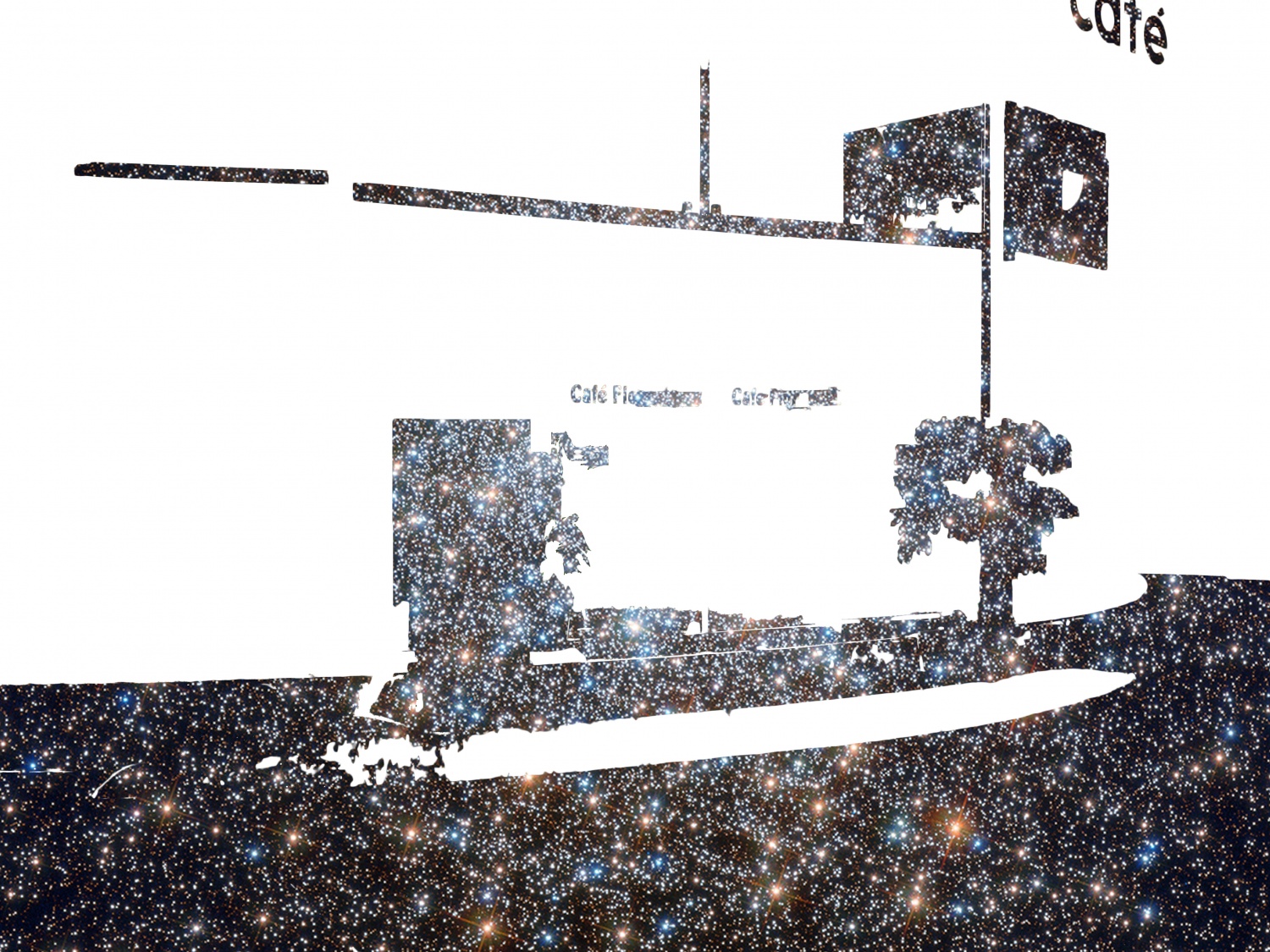
FLORESTA_TMCOPPOLA_2019 / NASA
EROMANIA, GOD IS A DEAD SMOKER / LE LABO, 30.06.2019, 19H03
INTERVIEWS
11.7.2019
CAROLINE BERNARD, DAVID COLLIN, FABRICE ARAGNO, JOELL NICOLAS (VERVEINE)
CPG
The "Eromania (God Is a Dead Smoker)" performance at the OSMOSCOSMOS exhibition is a radiophonic adaptation of the play "Eromania (History X)", devised in 2019 by Caroline Bernard and Karim Bel Kacem at the Théâtre de Saint-Gervais in Geneva. On stage, three Romanian camgirls told their story and talked about their profession. By means of interposed webcam, the camgirls perform erotic acts for men willing to pay lots of money for private shows. Representing one of the country’s major industries, they work from very well set up studios that train them and ensure that they are highly visible. At the time of globalisation 2.0, they crystallise a state of the world, money, desire and sex through a globalised machine for the creation of images. The "Eromania (God Is a Dead Smoker)" performance made with David Collin and his LABO (the radio creativity studio of RTS), in collaboration with the director Fabrice Aragno, goes over the 18 months Caroline Bernard spent in the camgirls’ studios. In the context of the OSMOSCOSMOS exhibition, they share the microphone with the philosopher Fabien Vallos, accompanied by Joell Nicolas (Verveine) who plays music specifically composed for the project live.
PERFORMANCE/RADIO SHOW IN FRENCH
Lectures live : Inès Valarcher
Prise de son-diffusion live : Sofia Müller
Musique live et composition : Joell Nicolas alias Verveine
Mixage et réalisation image : Fabrice Aragno, cinéaste
Réalisation et création radio : Gérald Wang
Stagiaire/Sous-titres : Justin Müller
Production : David Collin
Une co-production RTS LE LABO / CHEMINS DE TRAVERSE / THINK THANK THEATRE
Avec la collaboration de BEST STUDIO, Bucarest et du Centre de la Photographie à Genève.
Merci à Joerg Bader (dir.) et à toute lʹéquipe du Centre de la Photographie de Genève.
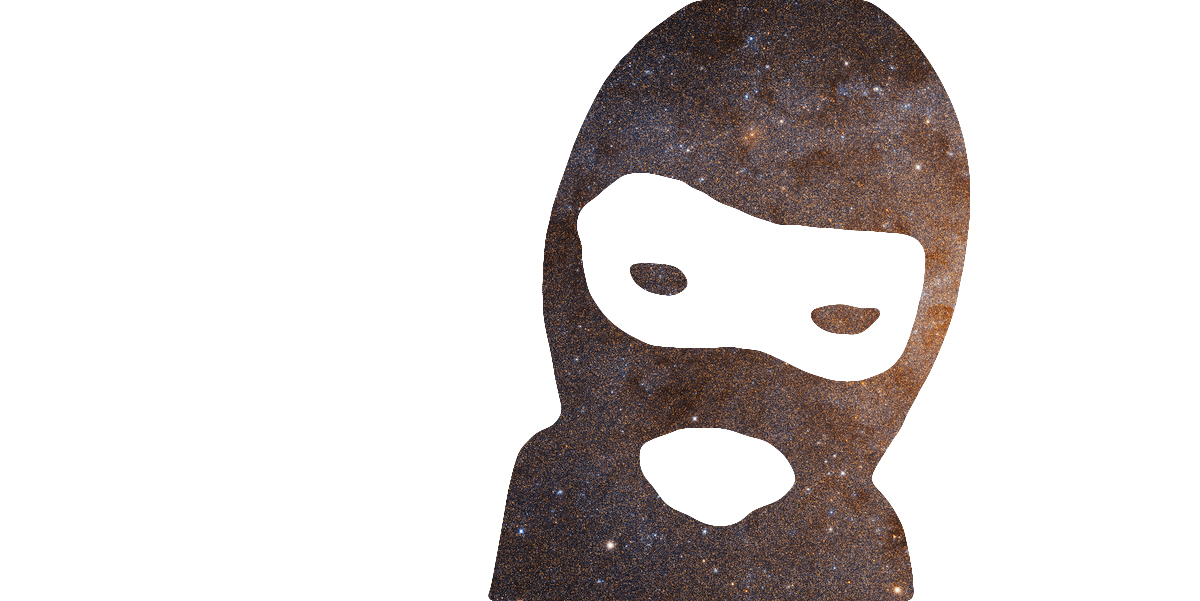
CAM NASA
ALAN BOGANA & NICOLE L'HUILLIER - FIELD WORKS (INTRODUCED BY MÓNICA BELLO)
LECTURES
05.7.2019
ALAN BOGANA, NICOLE L'HUILLIER, MÓNICA BELLO
CONFERENCE IN ENGLISH 03.07.2019
Artists Alan Bogana (Switzerland) and Nicole L’Huillier (Chile) are participating in the first edition of Simetría, an exchange residency spanning CERN and the Chilean astronomical observatories. Field Works presents material that comprises their explorations at CERN in a discussion facilitated by Mónica Bello, curator and head of Arts at CERN. A theme in Alan Bogana’s art work is the behaviour of light — real and speculative — and his residency research focuses on the conceptualisation and detection of dark matter. Observation is one of the motifs being explored by Nicole L’Huillier; she inquires into the ghostly natures of both infinitely small particles and large astronomical phenomena. The conversation will provide insights into the way artists gather and evaluate information and experiences during residencies. It will reveal how laboratories and observatories don’t only function as research spaces for scientists; they can also inspire artistic collaborations and innovations.
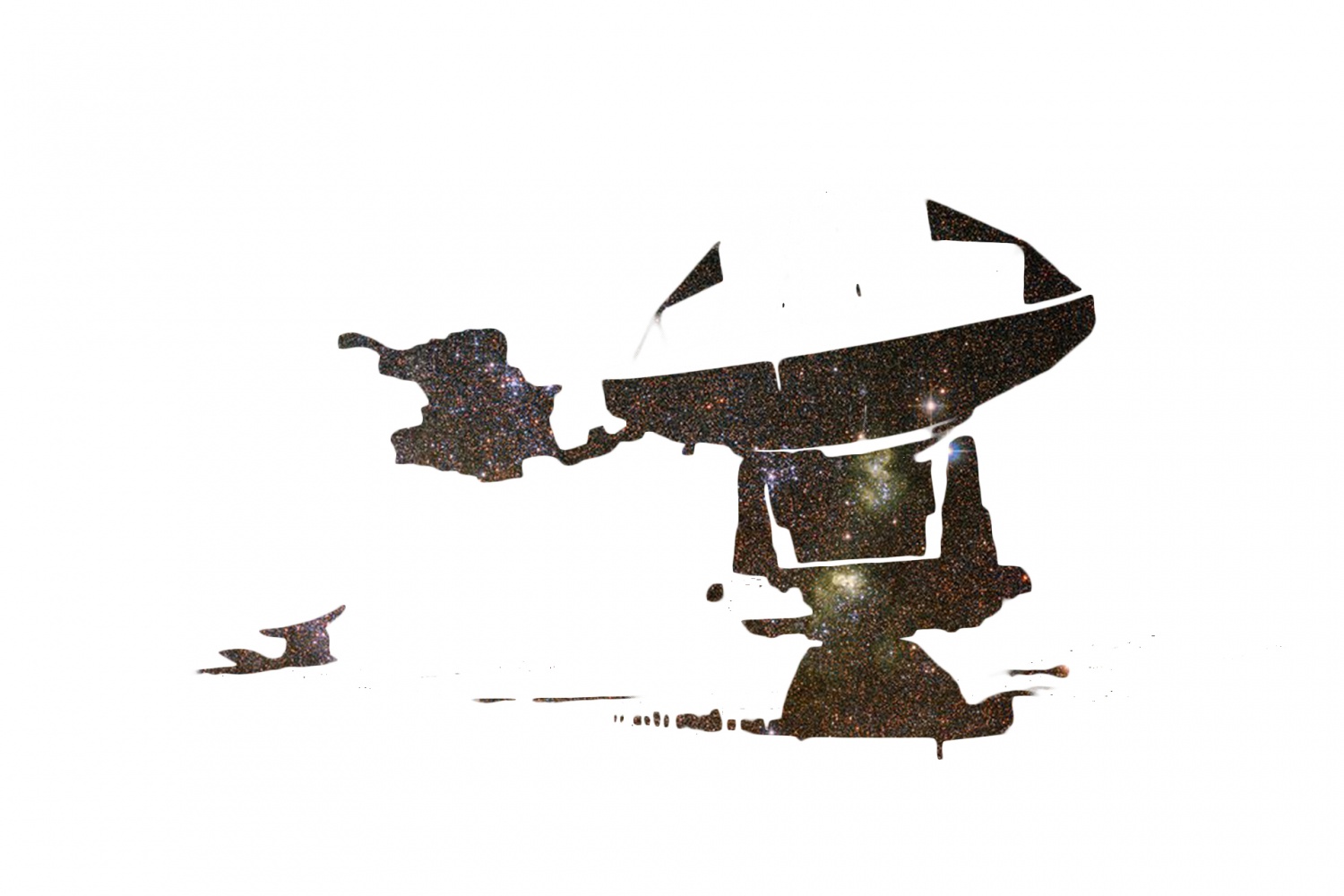
ALMA NASA
CONFÉRENCE ALICE GASPARINI,
LECTURES
03.7.2019
ALICE GASPARINI
Since the beginning of time, cosmogonic thinking has been associated with theology and metaphysics, and it was only with the first instruments for astronomical observation that scientific cosmology was able gradually to emerge and become distinct from myths. As for modern cosmology, it came on the scene following the conceptual revolution brought about by Albert Einstein’s theories of relativity last century. But in recent decades cosmology has undergone another revolution: from being a theoretical and partly speculative branch of physics, it has today become a precise science. Alice Gasparini, a doctor of physics and a teacher, reconstitutes this fundamental change due to recent images of remote space: the “light” rays that have travelled across the universe provide us with surprising information regarding its structure, its evolution and its destiny. The effects of the gravitational lens, expansion, dark energy and gravitational waves are on the menu of this unprecedented cosmic journey.
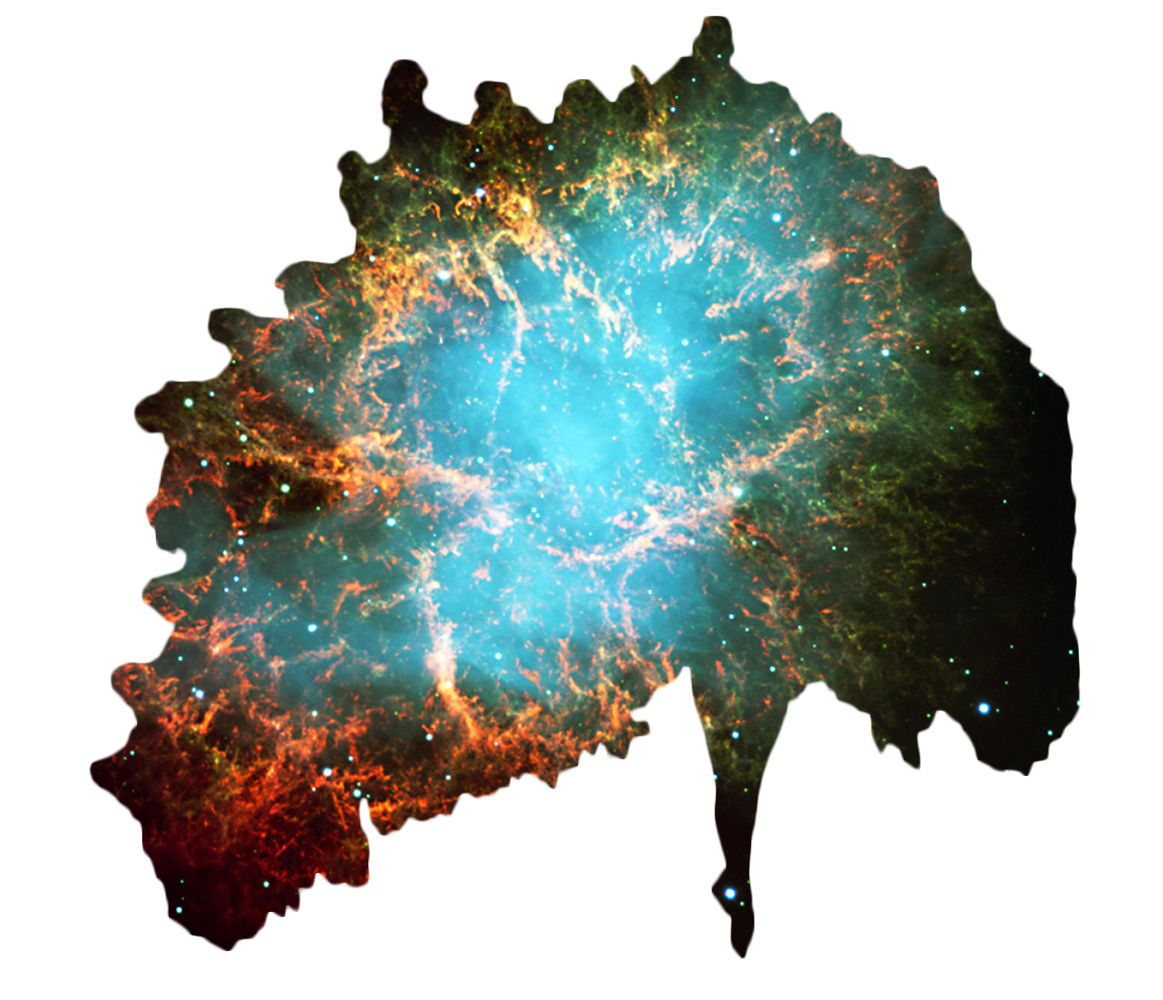
MESSIER 1 (THE CRAB NEBULA), CRÉDITS : NASA, ESA, J. HESTER AND A. LOLL (ARIZONA STATE UNIVERSITY)
GUIDED TOUR OF THE OSMOSCOSMOS
INTERVIEWS
28.6.2019
MAUREN BRODBECK, MARINA CAVAZZA & GIULIA D'ANNA LUPO, HÉLÈNE BELLENGER, MAJIDA KHATTARI, JOERG BADER
Guided tour of the OSMOSCOSMOS exhibition with artists Mauren Brodbeck, Marina Cavazza & Giulia D'Anna Lupo, Hélène Bellenger, Majida Khattari. Guided tour by Joerg Bader, director of the CPG and curator of the exhibition. Centre de la Photographie Genève, 50JPG, 18 June 2019
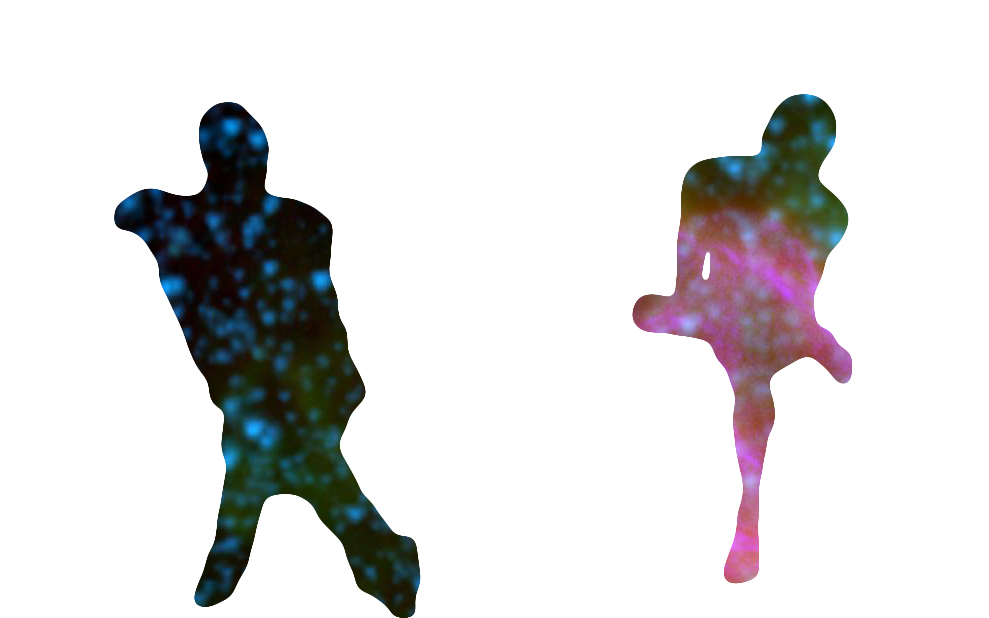
MANON / NASA
NICOLAS LIEBER: INTERVIEW OSMOSCOSMOS
INTERVIEWS
25.6.2019
NICOLAS LIEBER
Nicolas Lieber is both a photographer and an iconographer. He talks about his work for the exhibition OSMOSCOSMOS. Lieber is known for his portraits of young women, sometimes barely covered by military garb or not at all, and often with a camera in hand. This is how he himself is occasionally recorded in a reverse shot. In the exhibition gallery or his own apartment, he composes large wall collages, a kind of altar in homage to his muses, perhaps the most iconic being his interpretation of the abduction of Europe.
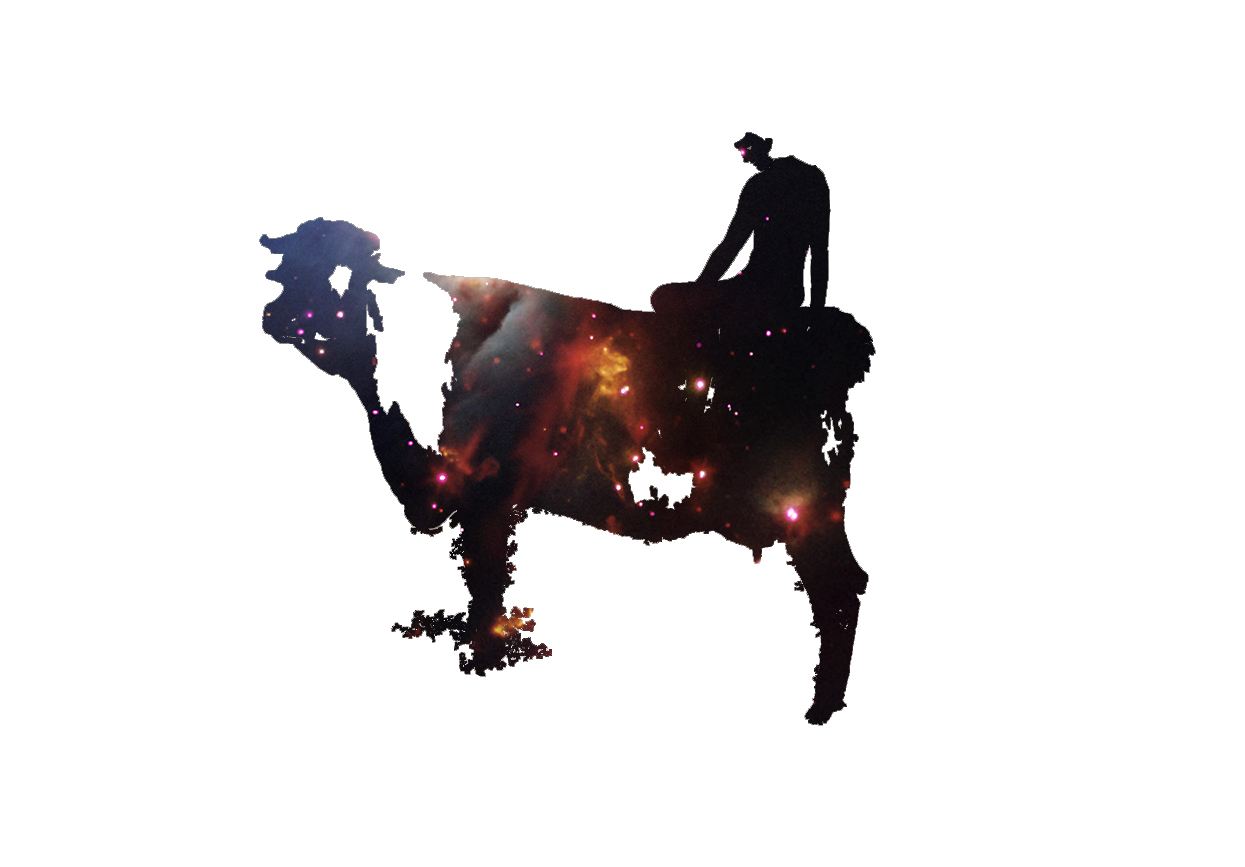
ENREGISTREMENT AUDIO / AUDIO RECORD
THE HUMAN BODY AS A MICROCOSM OF THE UNIVERSE: YOGA
OSMOSCOSMOS
23.6.2019
SÉBASTIEN LESEIGNEUR
CPG 22/06/19
Intention: Connect to your subtle body
Theme: OSMOSCOSMOS
Point of interest: The human body as a microcosm of the universe
Hatha yoga means the union of the moon and the sun, of all dualities, of inhaling and exhaling, of the female and the male. Every Saturday, the public is invited to stretch out their morning at the Centre de la photographie Genève. Artist and curator Sébastien Leseigneur, editor of the blog /50POSTS of OSMOSCOSMOS is offering a dynamic practice for all levels that combines meditation, respiration techniques, and physical poses.
INTRODUCTION
According to the Hatha Yoga tradition our body can be perceived as a microcosm of the universe. You have already heard about the chakras, we have 7: Muladhara, Svadhishthana, Manipura, Anahata, Vishuddha, Ajna and Sahasrara. They are connected by canals called nadis. In yoga theory, nadis carry prana, the vital energy. In other words, it is an idealized version of the subtle body structure intended to guide yogi visualization and contemplation.
From a historical point of view, it seems that the chakras were originally designed in connection with human anatomy for the purpose of physiological study.
In the physical body, nadis are channels that carry air, water, nutrients, blood and other body fluids and are similar to arteries, veins, bronchioles, nerves, lymphatic channels, etc. In a later phase in accordance with the tantric idea that the human body is the microcosm of the universe, material objects such as the sun, the moon and mountains, flowers were associated with these centres (Muladhara/root earth, Svadhishthana/moon emotional water, Manipura/ sun fire, Anahata/air wind, Vishuddha/ether space, Ajna/light mink and Sahasrara/lotus flower at the thousand petals, thought.) All this works like an image, like a map of our subtle body. And through the practice that follows, I invite you to be present and to be attentive to the least of your sensations. In yoga we use proprioception, it is the ability of our nervous system to receive information from the receptors we have on the skin, in our ears and in our muscles.
PRANAYAMA
We will work with breathing. In yoga there are the physical posture, asanas, and pranayama which allows us to activate prana and thus focus on the subtle body.
count the breaths, equalize the expiration
to breathe in the air that fills you, it's the universe that fills you
at the exhalation the air that leaves you is the universe that leaves you
to inhale feels the pelvic floor that activates and drags your pubis.
at the exhalation maintains this action at the same time as your rib cage rises.
Cosmic Ujjayi breathing (Ujjayi): contraction of the back of the glottis, oceanic respiration. Through the mouth the sound h. This sound breath helps to rest the mind, calm the nervous system and regulate the internal heat.
ASANAS
We will move with the breath from the inside out. This allows the body's movements to be a reflection of the dynamics of breathing, calms the nervous system and facilitates a meditative experience in movement.
Dance with the space at the border of your body
You are full of space
Tadasana: be natural, a beautiful mountain with the sky above. Note what you count, capture this moment as a photograph.
The practice of yoga is a practice of intention. The anjali mudra hands are a sign of respect and greeting to ourselves. Hands in front of the energy center of the heart, looking inwards. Anjali means offering, what are you taking to offer to your practice? Maybe softness, clarity, how you feel today? be attentive. When the intention is clear, we bow to seal it.
Action more important than form. Stay rooted in your foundation. Then integration, then expression.
Awakening sensitivity is the purpose of this trip. Brings creativity into the repetition. Through awakening, attention, you are able to say what is happening in your body.
Savasana: The end of your practice. Let your body rest in stillness and your mind in silence. Note how it feels to be you here. Imagine the starry night sky. Imagine this sky as a lake. Come back into your body as if you were entering this lake. Wake him up with one breath.
CONCLUSION
In Hindu mythology, humans, animals, the universe, deities are all part of the same dream. Each individual is part of a great cosmic theatre called Lila. This dream, this elusive reality that is ours according to Indian mystics, is called Maya*. She's like a veil. Through the practice of yoga, we could lift the veil and glimpse the "bigpicture" and realize that the self and the universe are one... Hindu philosophy is a rather creative approach to metaphysics. Close to the myth of Plato's cave. If you came out of the cave, what would you see behind the starry veil of reality? The eye captures a fragment of the energy and matter present in the universe in 3 dimensions, photography allows it to capture infrared waves, x-rays, radio waves. Astrophysicists are working to capture the invisible and antimatter. In yoga, by turning our attention inward, we begin to see the most subtle movements of our energetic body.
The greatest joy yoga can bring is to connect with yourself. We practice asanas to integrate into the depths of our being the knowledge that is transmitted to us in life.
Namaste: I greet the cosmic energy in you
*Māyā (devanāgarī: माया)1 is a Sanskrit term that has several meanings in Indian religions. Māyā is the power of God to create, perpetuating the illusion of duality in the phenomenal universe; it is also the illusory nature of the world. For Indian mystics, this manifestation is real, but it is an elusive reality. It would be a mistake, but a natural mistake, to consider it as a truth or a fundamental reality. Every person, every physical object, from the point of view of eternity, is just a drop in the ocean without limits. The purpose of spiritual awakening is to understand it, more precisely to experience the false dichotomy, the mirage of Māyā in order to transcend it, to pass its veil and to realize that the Âtman, that is to say the self and the universe, the Brahman are one.
"It is Māyā, the veil of illusion, which covers the eyes of mortals, makes them see a world that cannot be told if it is or if it is not, a world that resembles the dream, the radiation of the sun on the sand, where from afar the traveller thinks he sees a water table, or a rope thrown on the ground that he thinks is a snake (The World as Will and as Representation)."
Similar reflections (without denying their differences) can be found in Chinese philosophy (see Tao, Zhuang Zi) and Western philosophy. We can mention the allegory of Plato's cave.
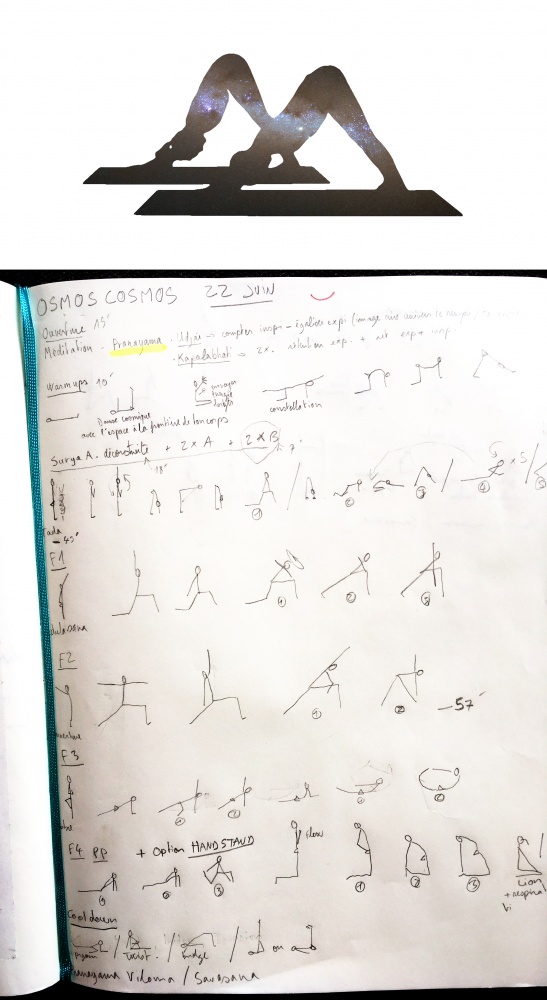
FEMINIST WEATHER REPORT/PURPLE TORRENT ACROSS SWITZERLAND
ESSAYS
21.6.2019
ANGELA MARZULLO
"The first feminist wave marks the beginning of the period and access to the right to vote. The second feminist wave focuses more on sexuality. The third feminist wave claims politics and artistic practice..." to be continued in the audio recording below
(On the occasion of the inaugural address of the exhibition OSMOSCOSMOS at the Center de la Photographie Geneva. In between speeches by Sami Kanaan, Administrative Advisor in Geneva in charge of the Department of Culture and Sport, and Joerg Bader, Director of the Centre de la Photographie Genève)
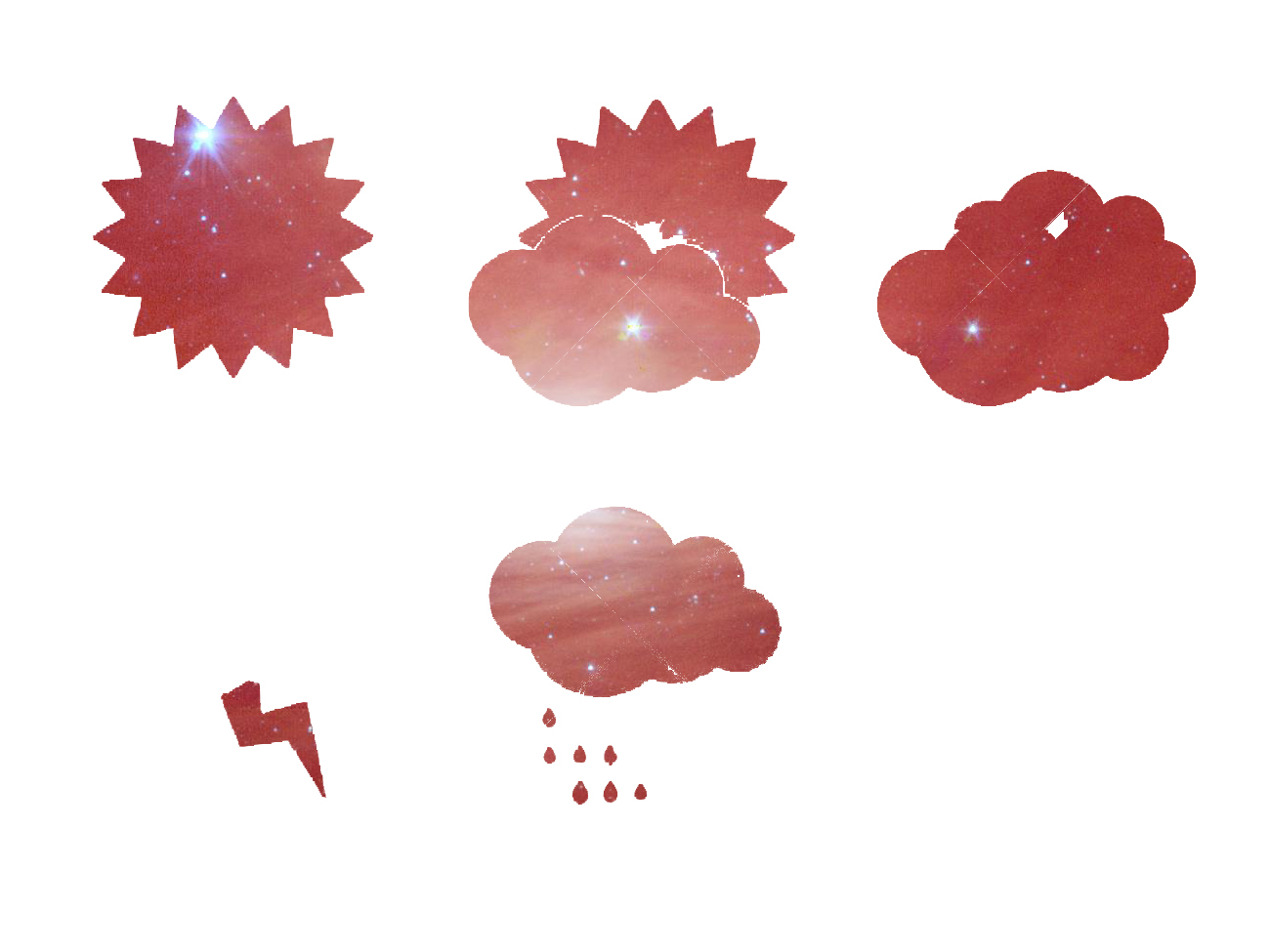
NASA
AUDIO EXCERPT FROM THE PRESS CONFERENCE: SET DESIGN AND THEMATIC CONTENT
OSMOSCOSMOS
19.6.2019
ALEXANDRA SCHÜSSLER & JOERG BADER
Reflections on the OSMOSCOSMOS exhibition at the press conference. Alexandra Schüssler talks to us about her approach to space and architecture, the place of vitrines and projections, the status of the image and the object. Joerg Bader develops the process that led to the development of the thematic. Superposition, separations, juxtapositions, we listen to the scenic constellation.

NASA
UN PETIT COUP DE BAGUETTE
ESSAYS
18.6.2019
SOPHIA DJITLI
"you know the funny thing is that these painkillers are called lamaline, I recommend it to you at the slightest threat of war being declared by your ovaries, there can be no orthodox Marxism, but some orthorexic fathers bloom in the meals of an after-party like you hear crows, the present what, the wastelands and the low skies types of ports but without the sea, to crush or perform is always an abortion, you are sure that it is not a childbirth rather no I assure you after there is nothing left, no trace, no echo, it's technical it's not producing, it's recycling with the remains of the past fertilized at the moment t, finally with the means of production in contraception at the moment just to say, the reproduction of the labour force or that invisible force thing that cleanses or vitalist miracle, Thus, after a few years of community life, the law in the modern sense has intervened not against state violence (law against terror) but through an organizing role, in its very text, in the exercise of violence, taking into account the resistance of the popular masses, and ovaries ready to invade_the world or nothing, everyone hates the police, symbol less than 3, my ovaries dance the macarena holala, grow from the black hole that we should never have looked at according to a little known technopagan superstition, the solar asshole of the world face to face with the center of Paris, so in Belleville an impromptu meeting with a beaugosse lambda and the universe that answers ok soon there will be nothing, alignment disaster, everyone takes care of my ovaries, the galaxy extends and contracts, we chat, let's avoid retraction delays, it's very simple the world or nothing but in the meantime you can show your swollen breasts legally ####### borders p 117, certainly it's not the state that is the subject of real history, certainly it's not the state that is the subject of real history, no need for implants a priori just a good momentary blow it's cosmetic surgery, let's go, but let's say natural based on yeah yeah yeah yeah the body walks and I walk on it with high chemical heels, you think I should do my nose again, not your breasts instead, the fetishism of false clarity is just another expression of the myth that was both obscure and of obvious clarity, introduction, the body walks and we rush to the surface of the earth as if it was always about curves, rolls and galipettes, nokinkshaming, the fear of losing the self and at the same time abolishing the border between the self and another life, community galaxies in endless afternoons, passages, permanent comings and goings at the counter, the fear of death and destruction is intimately associated with a promise of happiness that was, at any moment, a threat to civilization, holala the world is yours and mine, in the face of such an impossibility, Reason, in the service of the present, becomes a total imposture for__ the masses, red does not go with pink, I brought you a gift / I found it on a grave, I did not know if you would like it, Inside anyway, look carefully there is nothing to see, the speculum of emptiness, the plot of the cavernous centuries, engraved on the couch symbol less than three, times two, these tests aim to engage an effort of imagination, although they do not lead to grandiose utopian conclusions, p47, he first suggested that to succeed in mourning is to be able to exchange one object for another, planet for planet, ovary for ovary, and then he stated that melancholy was essential to the mourning process, a certain interchangeability of objects as if the object of our desire had to be transformed so that we can return to life, that's the end of my era of great missions, I only do grassroots now, so this text has no systematic scheduling, and so finally I fuck Baudrillard irregularly, At first glance, I think I lost you before I discovered that "I" is also missing from the call, conversely, the pain of mourning reveals how much we are subject to our relationships with others, in fact tears are what binds us to the earth, but it would then be necessary that the very "I" who seeks to tell be interrupted in the middle of the story because what I am questioned by his relationship to the Other, p 73 undoubtedly it is better to be subjected, even if it is only to violence, to abandonment, to a mechanism; no doubt it is better then to be subjected to poverty or abuse than to be subjected to nothing, to come, in the meantime, a short summary of previous episodes, cover cover, we were talking about recycling words unrelated to, let's say quickly, the planet, but at least with my two ovaries or two theses: the myth itself is already Reason and Reason turns into mythology and abortion in two steps or three if it is still valid, magic is a bloody falsification, but it does not deny domination by transforming itself into pure truth and acting as if it was the foundation of the world submitted to its power, the present belongs to those who never sleep, opium painkillers it was a starting point and last pack of cigarettes, I think the thing disintegrated, it opens, thanks all three of you for being present, it's ultra precious, oh honey I just saw these last messages, btw I work tomorrow on logos"
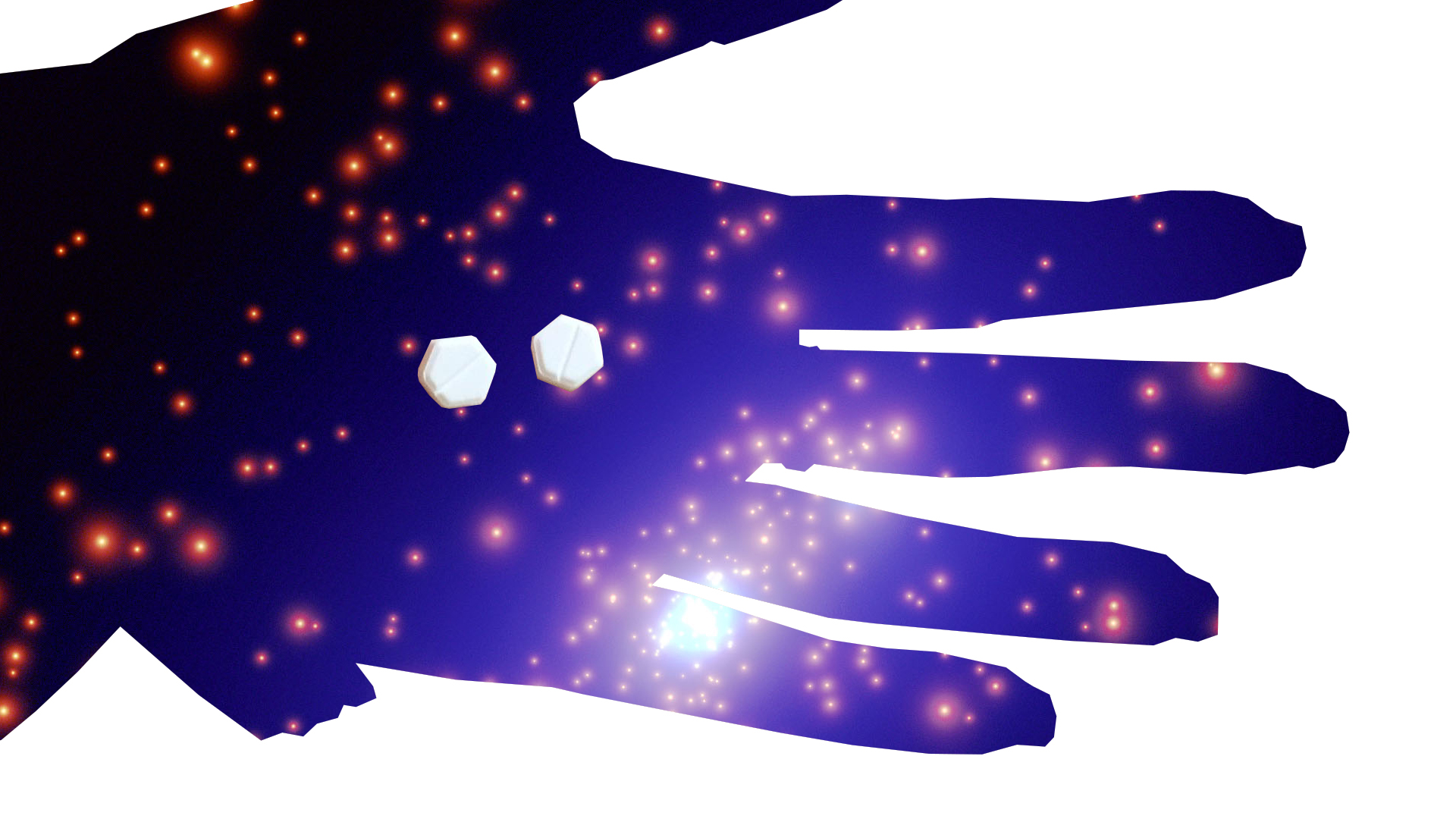
L’ANTIMATIÈRE: COMMENT PHOTOGRAPHIER L'INVISIBLE
LECTURES
17.6.2019
LINDA FREGNI NAGLER & MICHAEL DOSER
Exploring the invisible is one of the main objectives of science — but how can it be photographed? The way in which we can form an image of what we do not see for ourselves has powerful repercussions on the way we apprehend this world, of which we can perceive only an infinitesimal fraction, whether dealing with research into the identity of dark matter, dark energy and the exploration of antimatter or its seeming absence in the visible universe. This lecture by Linda Fregni Nagler, a photographer working in Milan on automated cognitive processes that dictate our way of perceiving the world, and Michael Doser, an experimental physicist working at CERN with special emphasis on antimatter, antihydrogen and its linkage to gravity, explores these questions by means of photography as well as through other technologies. These all have the shared characteristic of corresponding to technologically expanded perceptual equipment that has the potential to alter our cognitive apparatus.
Video from the lecture at MEG, Thue 11.6.2019
Parallel program 50JPG 2019
